About Us
Our History
Rayonier began with an entrepreneurial spirit that continues in our culture today, nearly a century later. We’ve seen many changes since our inception in 1926, but our strong values and relentless drive to keep doing better remain the same.
Year: 1926
Rainier Pulp & Paper Company is founded in Shelton, Washington, in 1926. President Edward “Ted” Mills, a self-educated immigrant from Wales, sees an opportunity to use Washington’s plentiful Western hemlock trees to produce a high-grade bleached paper pulp used for books and writing paper.
Our first pulp and paper mill, built in Shelton, uses the “leftover” wood scraps from the Simpson Logging Company’s sizeable sawmill. Rainier makes headlines by creating a high-value product out of what was once burned as waste.
Year: 1930
By 1930, our company has expanded to three mills in Shelton, Hoquiam and Port Angeles, WA, becoming the largest dissolving paper producer in the world. Later, a fourth pulp mill, the Shaffer Mill in Tacoma, WA, is added. We work with local loggers including the men in this photo, who deliver wood to our mills with the aid of horses and railroads.
Year: 1931
The paper industry stalls during the Great Depression, but Rainier research scientists have found a new outlet for pulp. They team up with DuPont, the leading producer of rayon, to perfect the world’s first high purity cellulose pulp made from western hemlock. Designed especially for the fast-growing rayon and cellophane industries, it will give companies that produce rayon an alternative to using cotton for fiber, which is rising in cost.
We call the pulp “Rayonier,” a name created from the words rayon and Mount Rainier, which is visible from our Shelton mill and research center. Soon after, we rename ourselves Rayonier.
Year: 1937
Rayonier becomes a publicly traded company on the New York Stock Exchange in 1937. With an annual capacity of 232,000 metric tons of pulp, our company provides one-third of total world consumption.
Year: 1938
President Franklin Delano Roosevelt establishes national parks, some of which include forests formerly used by our timber suppliers. To ensure a plentiful wood supply, Rayonier decides to invest in land of its own.
With plans to expand to the U.S. South, an area rich in timber, we begin aquiring land in Florida and Georgia. By 1955, our company will own 800,000 acres of timberland in these two states alone. Much of this land is still in our ownership, with fourth and fifth rotations of pines growing on the same land.
Year: 1939
Rayonier researchers create a new formula to enable Southern yellow pine to be used in commercial pulp production. A pulp mill built to utilize the new sulfite technology begins production in Fernandina Beach, FL, in 1939, the first of its kind in the Southeast. The location is chosen for its proximity to timberlands, ports and railways.
Year: 1942
Under the control of the War Production Board during World War II, Rayonier’s Fernandina Beach mill plays a major role in U.S. efforts through the production of nitrocellulose, used for explosives, bullets and rocket propellants. Rayonier’s research team has spent the previous decade perfecting the technology to manufacture the special pulp, but until the war it has never been done on a large scale.
Rayonier halts the majority of its paper pulp production to make the special nitrating cellulose. In 1943 alone, we produce more than 100,000 tons. We invite in our competitors to teach them how to produce it, too. After the war, we receive a 48-star flag from the federal government for our wartime contributions.
Year: 1944
In poor health, Ted Mills steps down as Rayonier’s president, replaced by Edward Bartsch, an official of the Chase National Bank of New York. Bartsch moves the corporate headquarters to New York City to bring the company closer to leaders in the rayon industry, however he travels regularly to the Northwest, launching a timber acquisitions program to enable Rayonier to control its own wood supply.
Rayonier’s headquarters will later be moved to Stamford, Connecticut (1979) before moving to Jacksonville, FL (2000) to be close to the majority of the company’s timber assets and employees.
Year: 1945
Major timberland purchases begin in western Washington, including our purchase of Bloedel-Donovan Logging Company in 1945 and Polson Logging Company in 1947. The Polson purchase comes with a railway company and a sawmill. By 1952, Rayonier has acquired 400,000 acres in Washington and is the largest timber owner on the Olympic Peninsula.
Year: 1951
Although Bartsch’s acquisitions will ultimately be remembered as a very wise investment, at the time the purchases — and the debt that comes with them — are controversial. He is replaced by Clyde Morgan, the head of Eastern Corporation. Morgan, a former Rayonier employee, had been in charge of building the Fernandina pulp mill.
Year: 1954
Rayonier’s second southeast pulp mill opens in Jesup, GA, supplying a growing demand for high purity cellulose pulp used in the manufacture of rayon tire cord. (By the early 1950s, per-capita consumption of man-made cellulose has reached 7 pounds in the U.S., compared to one pound in the rest of the world). The successful mill will undergo several major expansions in the years to come. This same year, Rayonier opens offices in Europe and Asia.
Year: 1955
Morgan Nursery is established in Nassau County, Florida, providing seedlings to reforest our land after harvest. Nextdoor, we establish one of the first seed orchards in the U.S. South to improve our trees' growth and disease resistance. This marks the beginning of Rayonier's forestry research program, which is an integral part of our business to this day.
Rayonier will plant its billionth tree in 2009. Now relocated to Elberta, AL, our nursery continues to produce about 35 million seedlings a year. The original orchard site is now part of Wildlight, our real estate team's first community and the home of Rayonier's headquarters.
Year: 1957
Rayonier establishes its East Coast Genetic Resource Center, focused on tree improvement research and tree breeding techniques. This program continues to be a key component of Rayonier’s forest management program today, with a focus on breeding the most disease-resistant, productive trees.
Year: 1958
An engineer, Russell Erickson, is named the new Rayonier president. He focuses on improving efficiency, including how we manage our vast timber holdings. He rebuilds the railroads we inherited in the Northwest, purchases equipment to improve efficiency in logging operations and takes a detailed forest inventory. Access roads are created, tree farms are planted, and plans are developed for reforestation as well as fire protection in our forests.
Year: 1962
Forests are leveled by a devastating Columbus Day windstorm in the Pacific Northwest, which will be remembered as one of the worst storms of the century. Efforts to salvage fallen timber lead to the development of major new markets for logs in the Far East, initially in Japan, but eventually also in Korea and China.
Log export becomes a large and profitable business for Rayonier and for other Pacific Northwest forest products companies over the decades that follow.
Year: 1968
Rayonier is purchased for $293 million, becoming ITT Rayonier, a wholly-owned subsidiary of ITT Corporation, a major international conglomerate.
In 1994, Rayonier will spin-off from ITT and resume as an independent corporation.
Year: 1980
A year after the restoration of diplomatic relations between the United States and China, Rayonier opens a new office in Tokyo, Japan, and successfully establishes a customer base in China for its U.S. pulp. In 1985, Rayonier will open an office in Beijing, China.
Year: 1981
With the opening of Naval Submarine Base Kings Bay adjacent to Rayonier forest land in the late 1970s, Rayonier recognizes it has to sell properties that will be needed for homes, schools, utilities and other development as families move to the area. The company establishes Rayland, a subsidiary that will work with local leadership and sell land with a “higher and better use.” This real estate company will later be renamed Raydient Places + Properties.
Year: 1985
Rayonier Timberlands Limited Partnership, L.P. (RTLP) is formed, and rights to 25 percent of the cash flow from Rayonier’s timberlands are sold to the public via an IPO of partnership units. Public participation in the partnership will end in 1998, but one result of the partnership is that Rayonier breaks the supply link between its timberlands and manufacturing facilities, auctioning timber to the highest bidder. This helps establish the unique non-integrated operating model that Rayonier continues to use today.
Year: 1988
A log trading office is opened in Auckland, New Zealand, paving the way for Rayonier to expand its interest in the country that is rich in timber. New Zealand is within close proximity to Asian markets with a high demand for timber.
Year: 1992
Rayonier purchases over 250,000 acres of highly productive radiata pine plantations in New Zealand, strengthening our ability to serve customers in New Zealand and in Asian markets.
Year: 1994
After the ITT spin-off, Rayonier stock trading begins on the New York Stock Exchange under the symbol RYN in 1994.
Year: 1999
Rayonier becomes the 7th largest private timberland owner in the U.S. by purchasing 968,000 acres of timberland in Florida, Georgia and Alabama from Smurfit-Stone Container, bringing Rayonier’s total ownership to 2.4 million acres.
Year: 2000
Rayonier partners with several conservation agencies to complete one of the largest protected areas east of the Mississippi, the Pinhook Swamp. The sale of our 60,000-acre tract is the missing puzzle piece in a corridor that links Florida’s Osceola National Forest to the south with the Okefenokee National Wildlife Refuge to the north. The swamp helps protect the region’s water resources while hosting an ecosystem that is important to black bears and many wetland-dependent species.
Year: 2001
In 2001, Rayonier's U.S. forests achieve Sustainable Forestry Initiative® certification.
Designed to protect the world's forests and the ecosystems that rely on them, these sustainability standards include measures to protect wildlife as well as water and soil quality. We work with third party auditors, who regularly check our land to ensure compliance. Only a small percentage of the world's forests are certified.
Rayonier's New Zealand forests also achieve Forest Stewardship Council® certification a few years prior, in 1998, making Rayonier Matariki one of the first forestry companies to do so in New Zealand.
Year: 2003
The sale of Rayonier’s Matanzas Marsh triples the size of Florida’s Faver-Dykes State Park and leads to creation of the Matanzas State Forest. This property, purchased by the Florida Forever program, was key to complete an important wildlife conservation corridor, the last undisturbed salt marsh within the Guana Tolomato Matanzas National Estuarine Research Reserve.
Designated an important birding area by The Audubon Society, it offers recreational and research opportunities in a rare and beautifully-preserved setting. No other landowner has placed more Florida land into conservation than Rayonier.
Year: 2004
On January 1, 2004, Rayonier reorganizes as a Real Estate Investment Trust, or REIT, focusing on three core businesses: forest resources, real estate and performance fibers. In 2007, Rayonier will become the first REIT to issue convertible debt from its subsidiaries.
Year: 2005
Rayonier purchases 326,000 acres in New Zealand, forming a joint venture named Rayonier | Matariki Forests that more than doubles the size of its business in New Zealand.
Year: 2006
Rayonier’s timberland purchases continue, with a 228,000-acre acquisition in the Southeast in 2006; 110,000 acres in New York and Washington states in 2008; and 250,000 acres in Mississippi, Louisiana, Alabama and Tennessee in 2011.
Year: 2009
Rayonier plants its billionth tree on November 19, 2009, in Nassau County, Florida, not far from where it planted its first stand of trees in the 1930s.
Year: 2010
Rayonier sells 14,000 acres to The Nature Conservancy to conserve the Murff Tract in Southeast Georgia’s Altamaha River watershed, protecting at least 17 endangered, threatened or special concern species.
Year: 2014
On June 27, 2014, Rayonier’s performance fibers business spins off into an independent, publicly traded company, Rayonier Advanced Materials Inc. (NYSE: RYAM). Rayonier announces David L. Nunes as President and Chief Executive Officer.
Year: 2015
Rayonier sells 4,900 acres destined to become part of the Silver Springs Watershed Forest Legacy Project in Central Florida. It is critical to preserving wildlife habitat and clean water for one of the world’s most iconic freshwater spring systems. The property links Silver Springs State Park to the Cross Florida Greenway and Ocala National Forest.
Year: 2016
Raydient Places + Properties launches a new product now called “Raydient Places.” These rural properties are enhanced for future homesteads, with fences, completed surveys and titles, and sometimes driveways and culverts.
Rayonier, Raydient and the Nassau County School District host a groundbreaking on March 28, 2016, for Wildlight Elementary School, the first building to begin construction in Wildlight, Raydient’s first master-planned community.
* Raydient is a taxable Rayonier company.
Year: 2017
Rayonier moves its headquarters to Wildlight, Florida. The move combines multiple company offices into one and makes Rayonier the first occupant of the new town Raydient is developing, Wildlight.
* Raydient is Rayonier’s taxable real estate subsidiary.
Year: 2020
On May 8, 2020, Rayonier acquires Pope Resources, a pure play timber company headquartered in Poulsbo, Washington. The company comes to Rayonier with timberlands, a timber fund business, and a thriving real estate business, Olympic Property Group, which is now a part of Raydient.* Our two companies are closely-aligned in our values, including our long-term approach to decision-making; transparency with employees and investors; and interest in exploring opportunities with non-timber income and real estate.
* Raydient is a trademark of Raydient LLC, a taxable real estate investment trust subsidiary of Rayonier. The Raydient development properties are owned by Raydient LLC and its various subsidiaries.

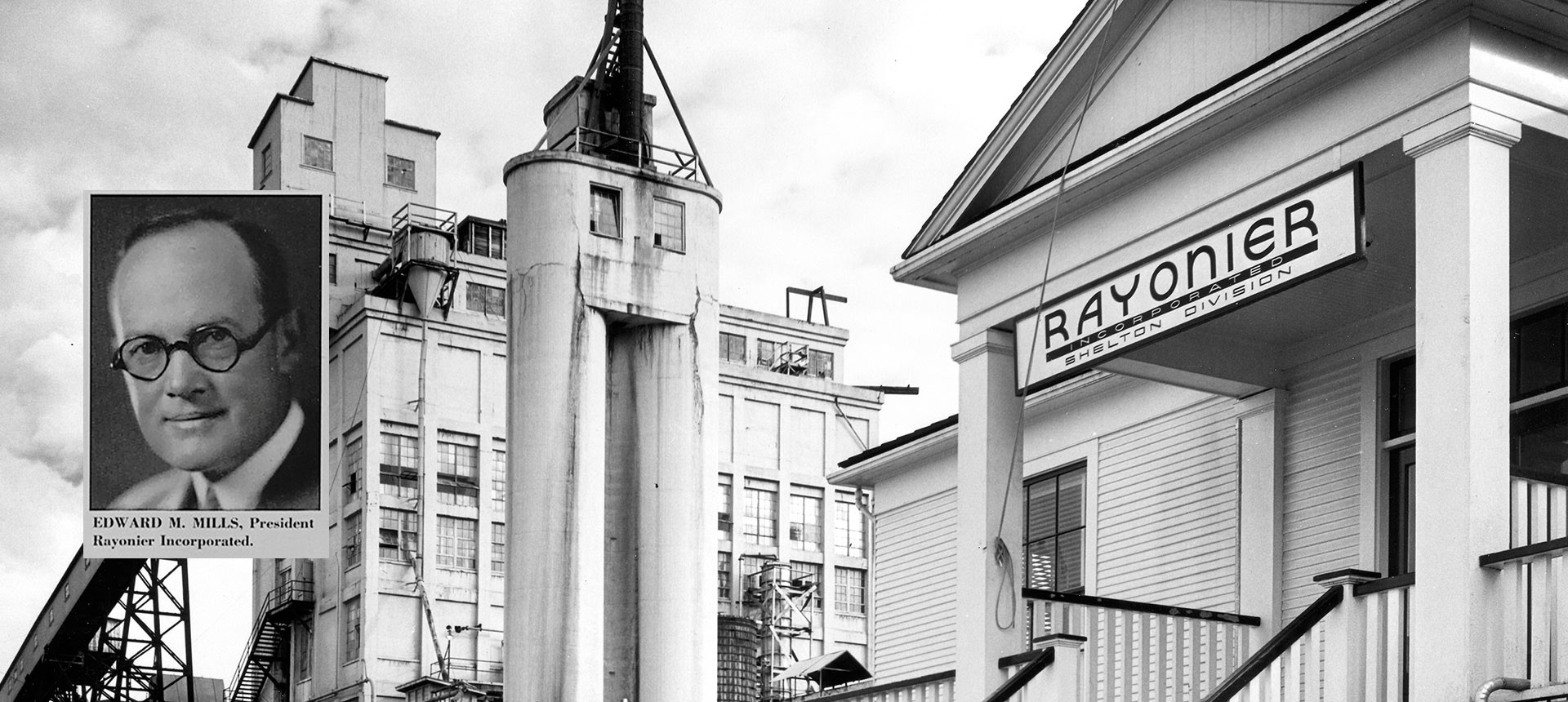
1926
Rainier Pulp & Paper Company is founded in Shelton, Washington, in 1926. President Edward “Ted” Mills, a self-educated immigrant from Wales, sees an opportunity to use Washington’s plentiful Western hemlock trees to produce a high-grade bleached paper pulp used for books and writing paper.
Our first pulp and paper mill, built in Shelton, uses the “leftover” wood scraps from the Simpson Logging Company’s sizeable sawmill. Rainier makes headlines by creating a high-value product out of what was once burned as waste.


1930
By 1930, our company has expanded to three mills in Shelton, Hoquiam and Port Angeles, WA, becoming the largest dissolving paper producer in the world. Later, a fourth pulp mill, the Shaffer Mill in Tacoma, WA, is added. We work with local loggers including the men in this photo, who deliver wood to our mills with the aid of horses and railroads.

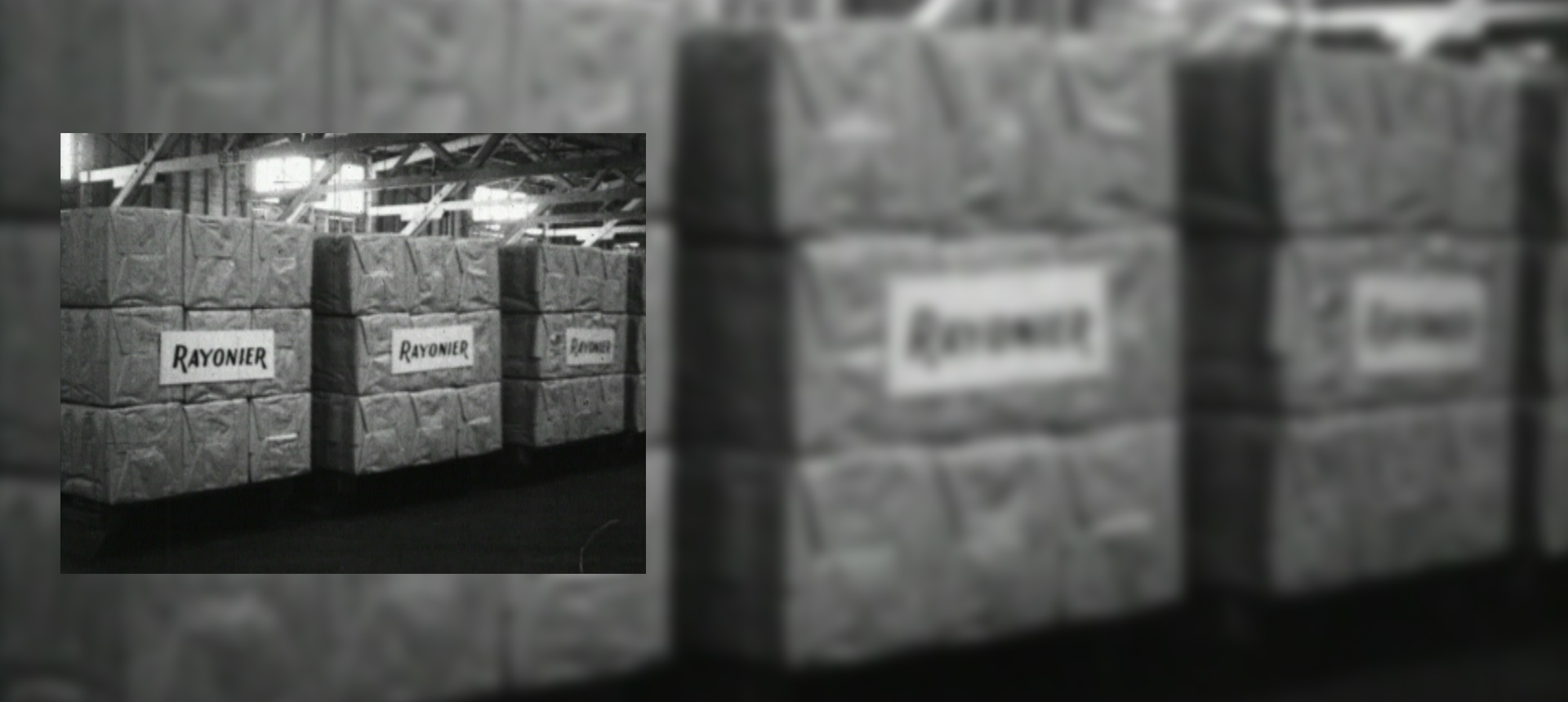
1931
The paper industry stalls during the Great Depression, but Rainier research scientists have found a new outlet for pulp. They team up with DuPont, the leading producer of rayon, to perfect the world’s first high purity cellulose pulp made from western hemlock. Designed especially for the fast-growing rayon and cellophane industries, it will give companies that produce rayon an alternative to using cotton for fiber, which is rising in cost.
We call the pulp “Rayonier,” a name created from the words rayon and Mount Rainier, which is visible from our Shelton mill and research center. Soon after, we rename ourselves Rayonier.

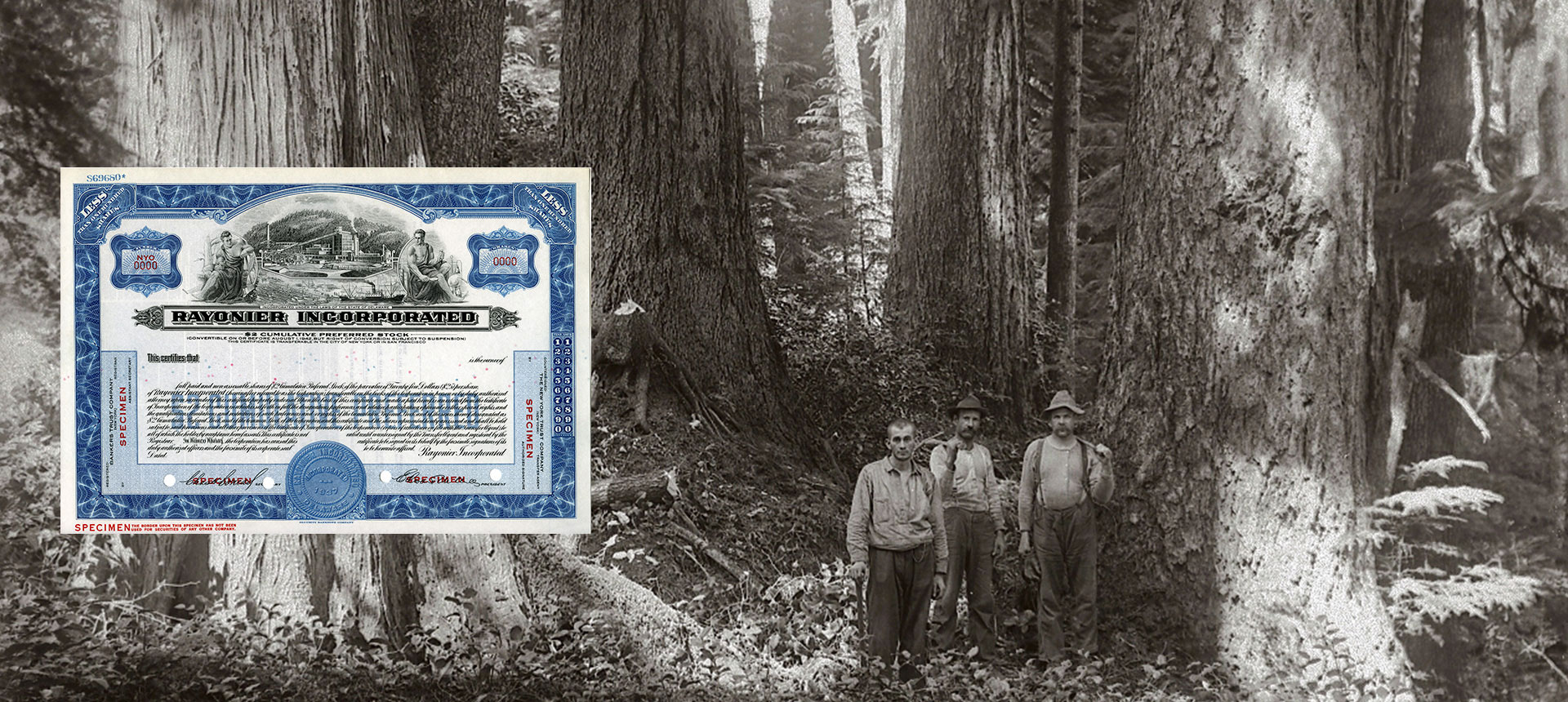
1937
Rayonier becomes a publicly traded company on the New York Stock Exchange in 1937. With an annual capacity of 232,000 metric tons of pulp, our company provides one-third of total world consumption.

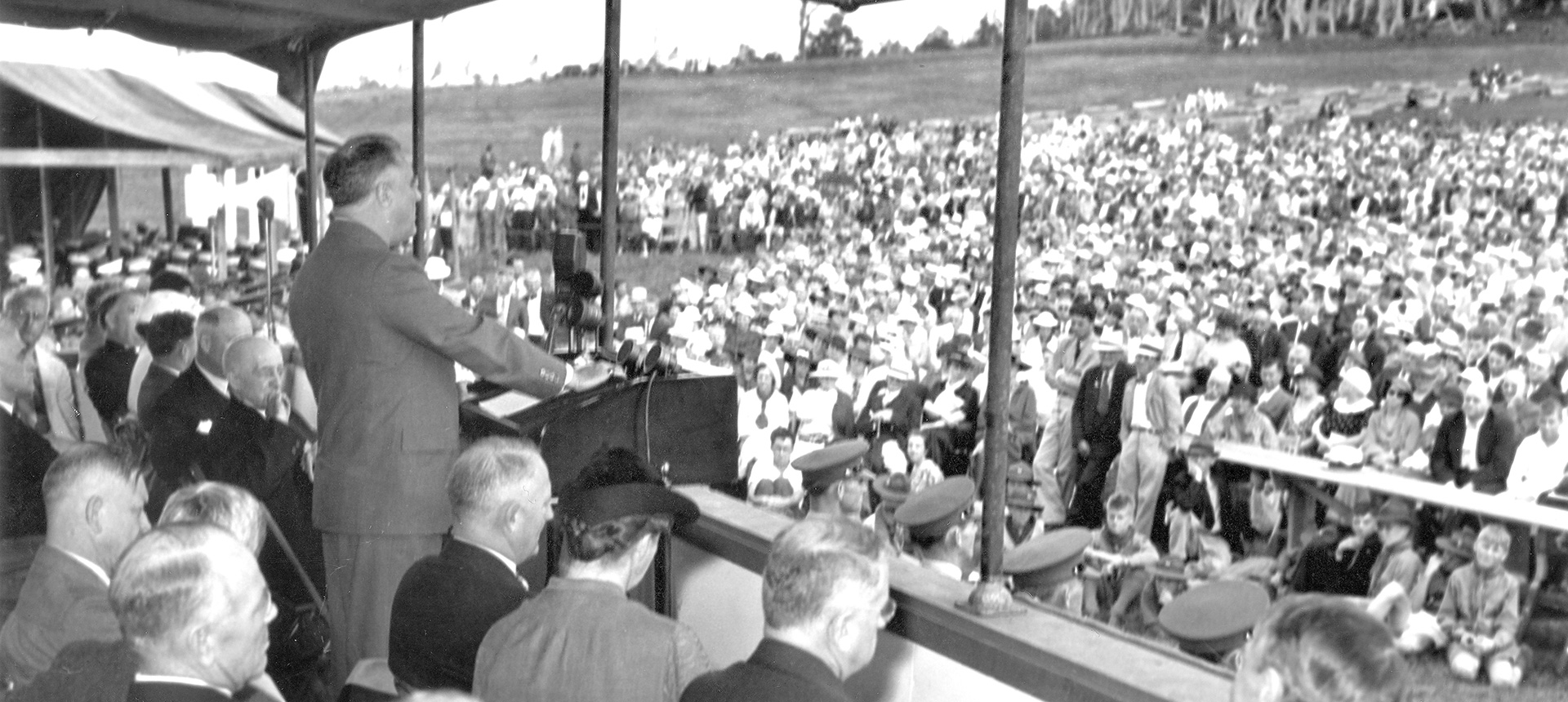
1938
President Franklin Delano Roosevelt establishes national parks, some of which include forests formerly used by our timber suppliers. To ensure a plentiful wood supply, Rayonier decides to invest in land of its own.
With plans to expand to the U.S. South, an area rich in timber, we begin aquiring land in Florida and Georgia. By 1955, our company will own 800,000 acres of timberland in these two states alone. Much of this land is still in our ownership, with fourth and fifth rotations of pines growing on the same land.

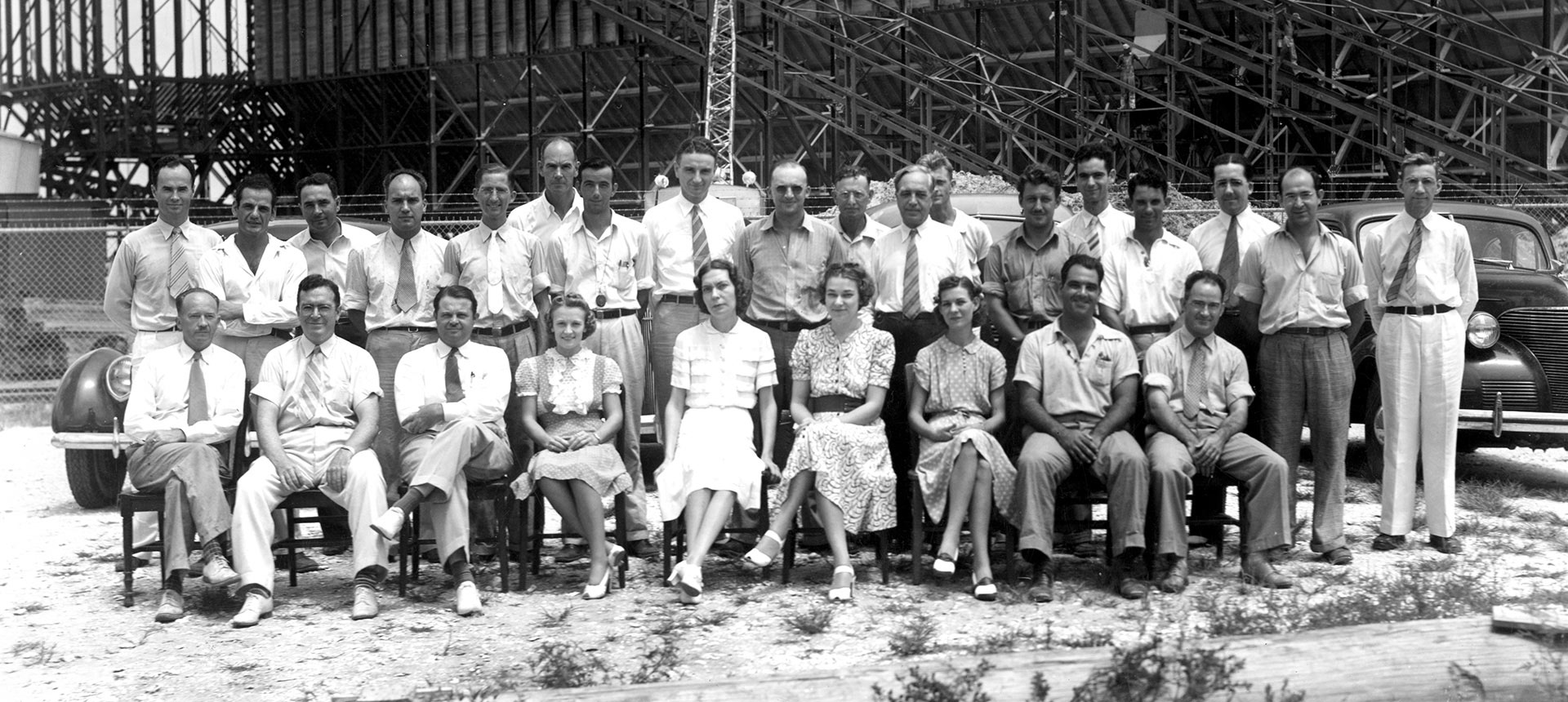
1939
Rayonier researchers create a new formula to enable Southern yellow pine to be used in commercial pulp production. A pulp mill built to utilize the new sulfite technology begins production in Fernandina Beach, FL, in 1939, the first of its kind in the Southeast. The location is chosen for its proximity to timberlands, ports and railways.

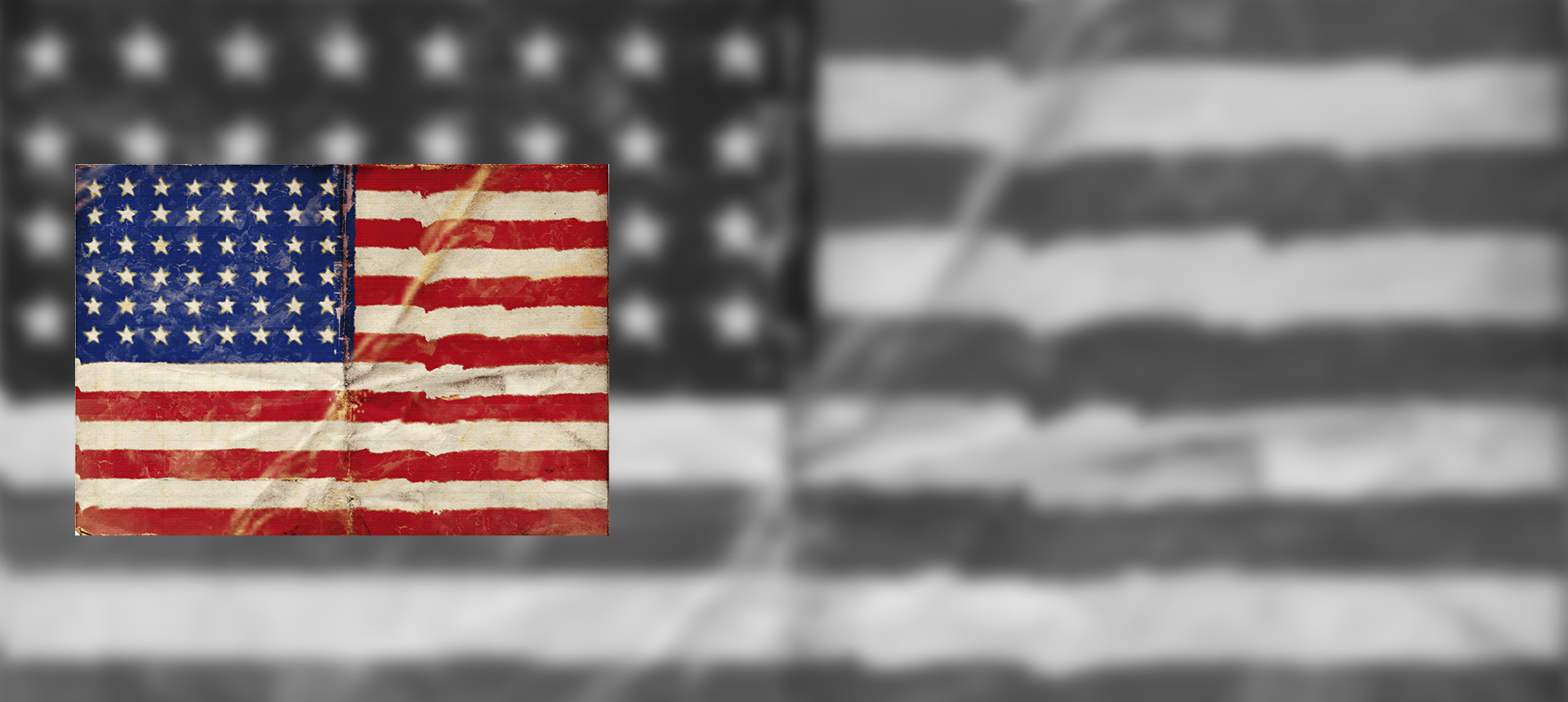
1942
Under the control of the War Production Board during World War II, Rayonier’s Fernandina Beach mill plays a major role in U.S. efforts through the production of nitrocellulose, used for explosives, bullets and rocket propellants. Rayonier’s research team has spent the previous decade perfecting the technology to manufacture the special pulp, but until the war it has never been done on a large scale.
Rayonier halts the majority of its paper pulp production to make the special nitrating cellulose. In 1943 alone, we produce more than 100,000 tons. We invite in our competitors to teach them how to produce it, too. After the war, we receive a 48-star flag from the federal government for our wartime contributions.

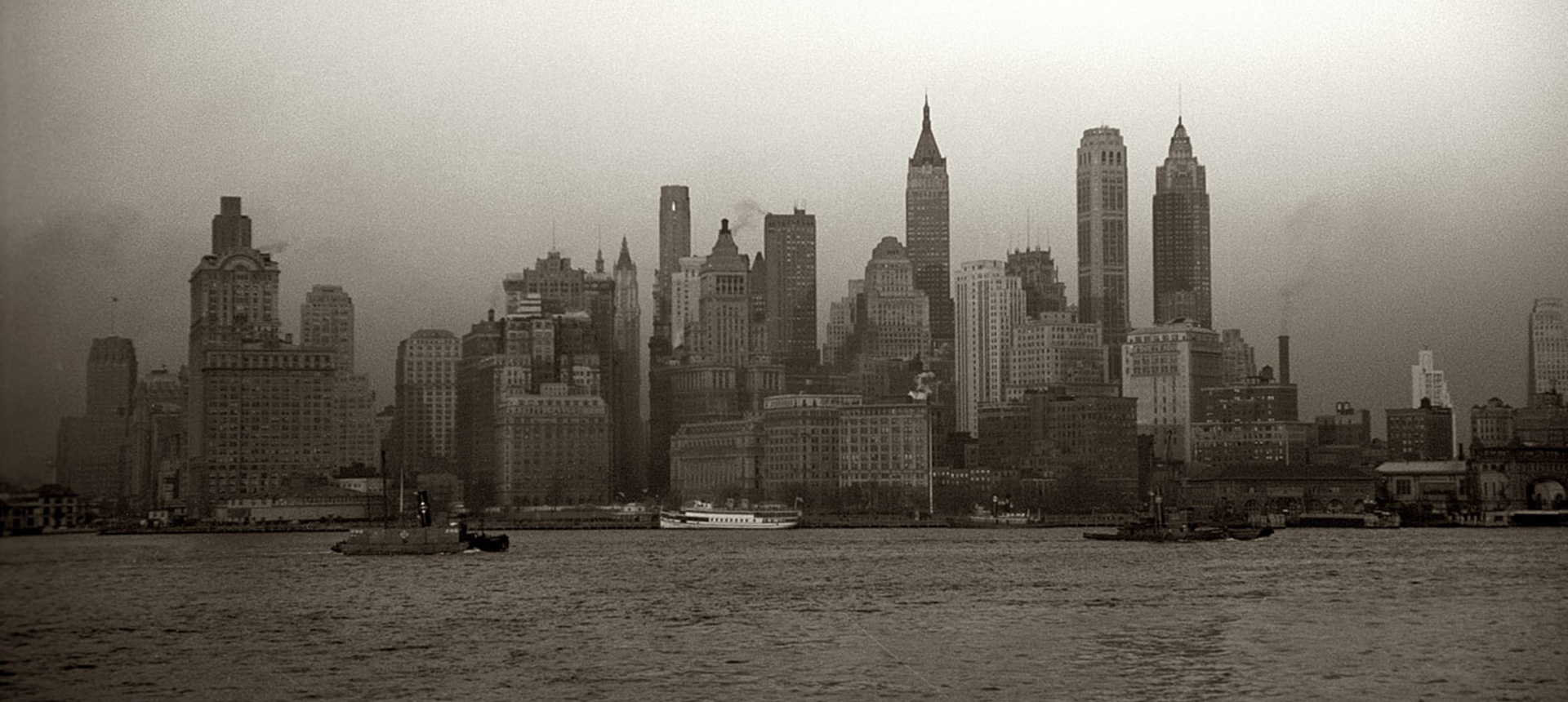
1944
In poor health, Ted Mills steps down as Rayonier’s president, replaced by Edward Bartsch, an official of the Chase National Bank of New York. Bartsch moves the corporate headquarters to New York City to bring the company closer to leaders in the rayon industry, however he travels regularly to the Northwest, launching a timber acquisitions program to enable Rayonier to control its own wood supply.
Rayonier’s headquarters will later be moved to Stamford, Connecticut (1979) before moving to Jacksonville, FL (2000) to be close to the majority of the company’s timber assets and employees.

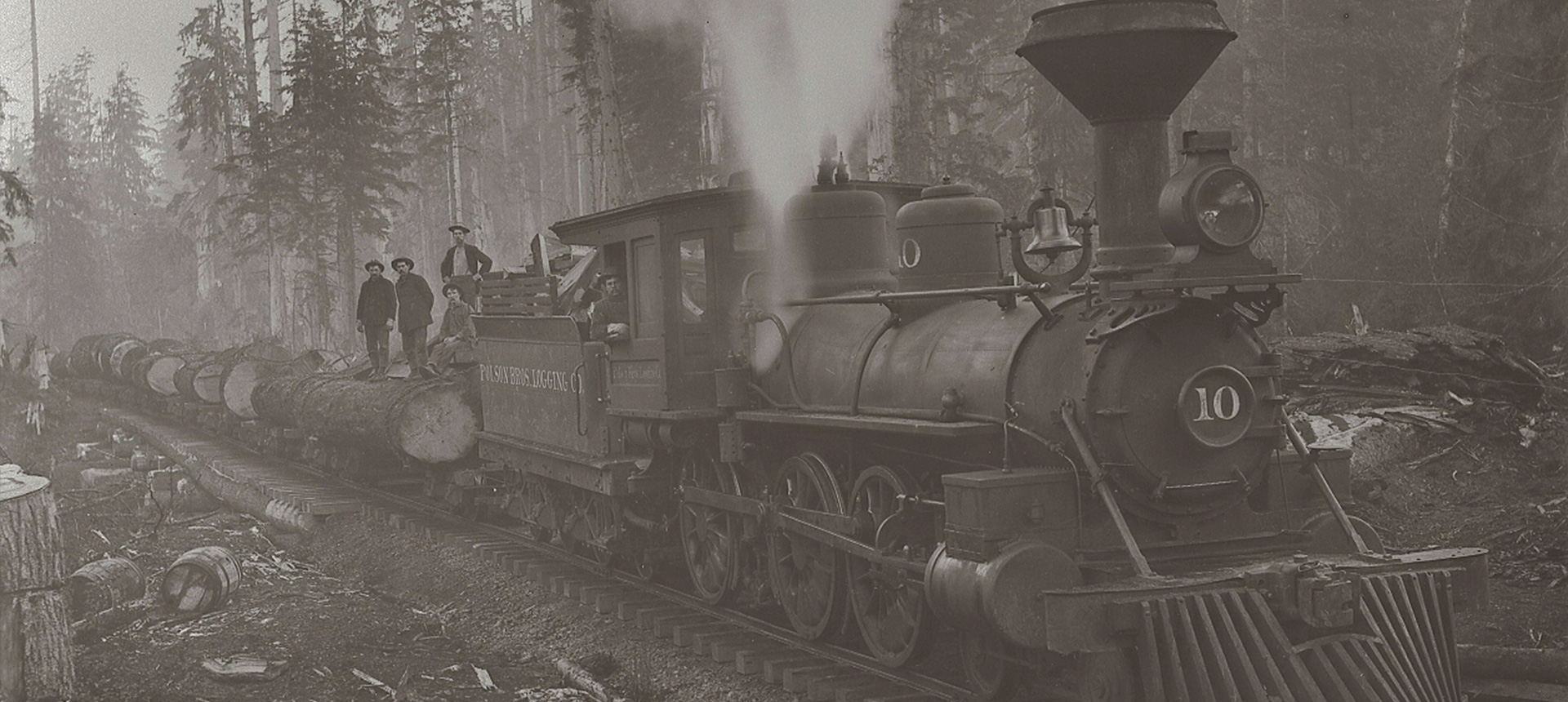
1945
Major timberland purchases begin in western Washington, including our purchase of Bloedel-Donovan Logging Company in 1945 and Polson Logging Company in 1947. The Polson purchase comes with a railway company and a sawmill. By 1952, Rayonier has acquired 400,000 acres in Washington and is the largest timber owner on the Olympic Peninsula.

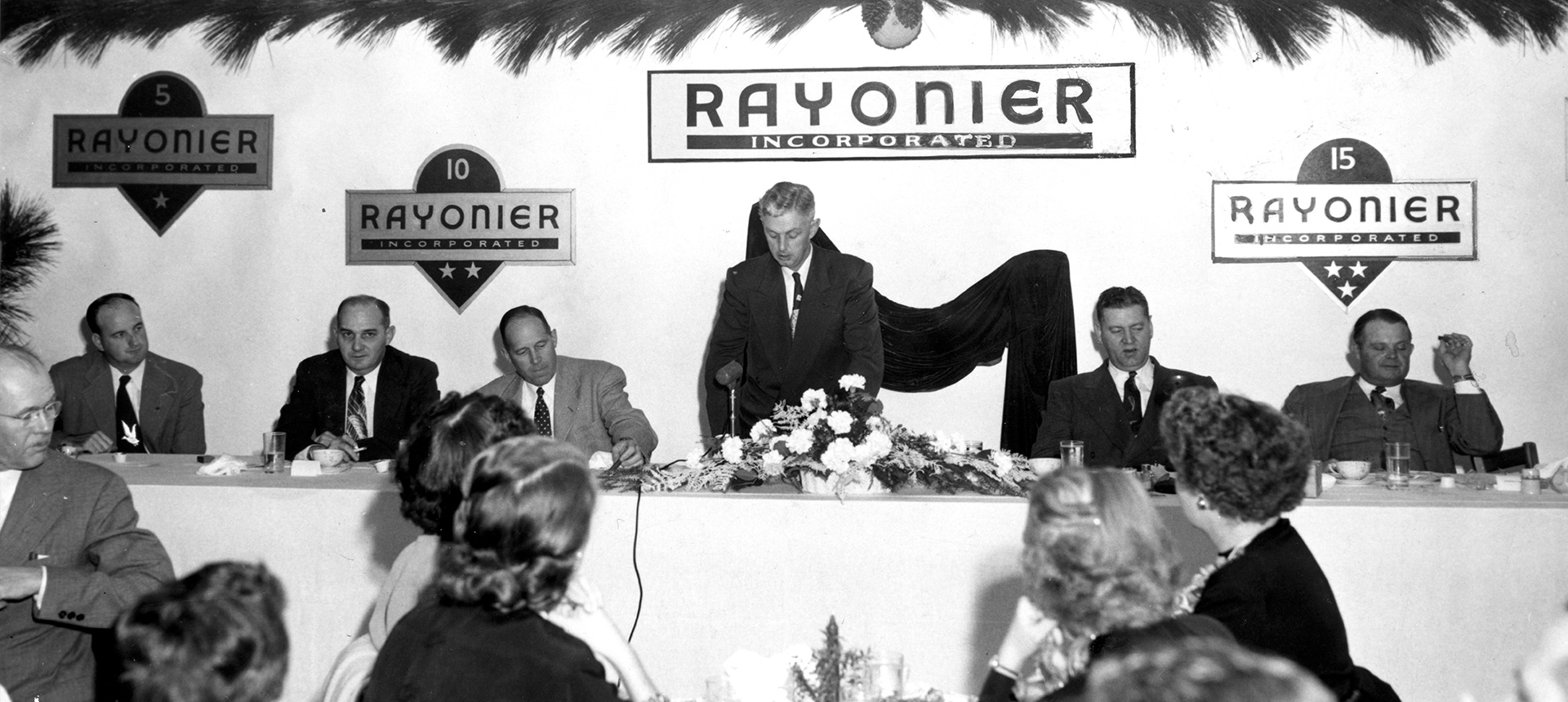
1951
Although Bartsch’s acquisitions will ultimately be remembered as a very wise investment, at the time the purchases — and the debt that comes with them — are controversial. He is replaced by Clyde Morgan, the head of Eastern Corporation. Morgan, a former Rayonier employee, had been in charge of building the Fernandina pulp mill.

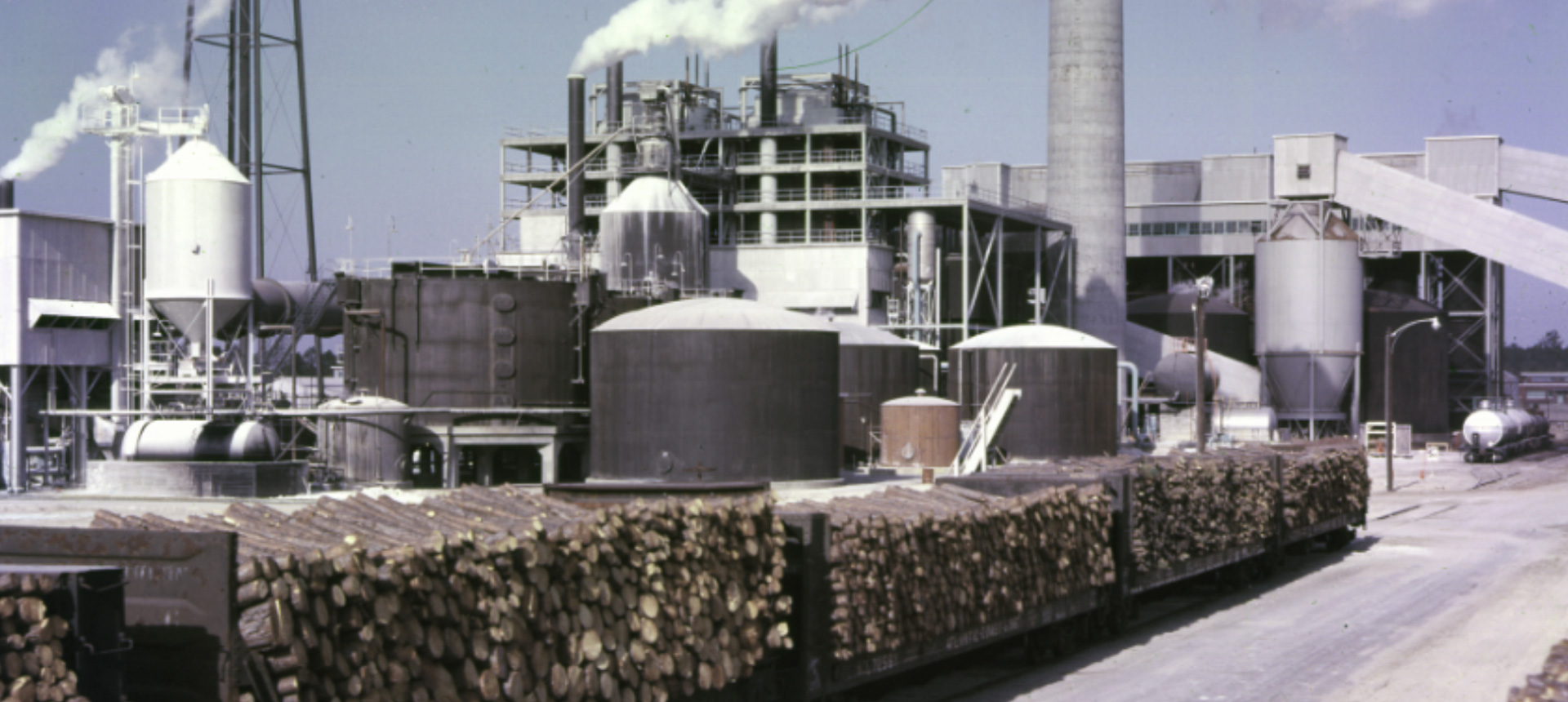
1954
Rayonier’s second southeast pulp mill opens in Jesup, GA, supplying a growing demand for high purity cellulose pulp used in the manufacture of rayon tire cord. (By the early 1950s, per-capita consumption of man-made cellulose has reached 7 pounds in the U.S., compared to one pound in the rest of the world). The successful mill will undergo several major expansions in the years to come. This same year, Rayonier opens offices in Europe and Asia.

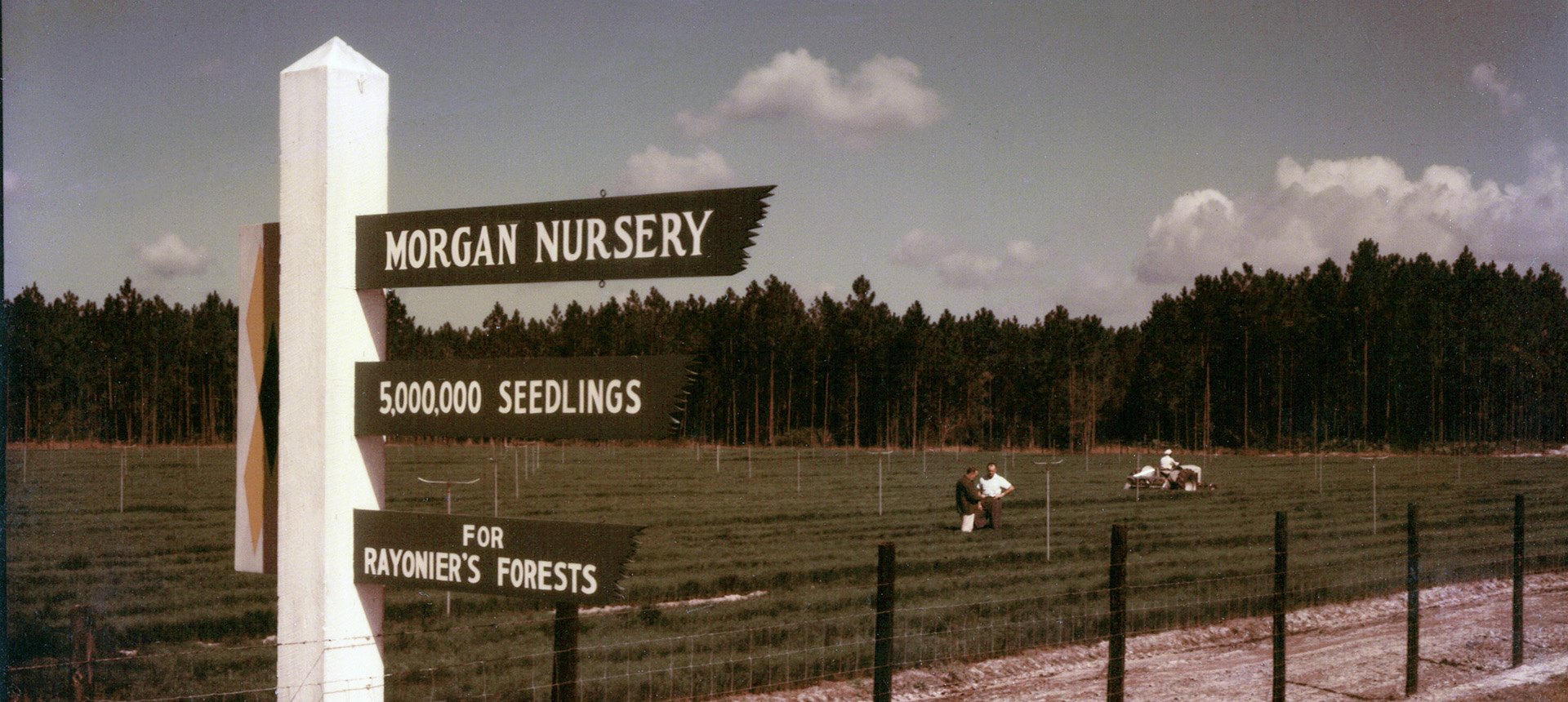
1955
Morgan Nursery is established in Nassau County, Florida, providing seedlings to reforest our land after harvest. Nextdoor, we establish one of the first seed orchards in the U.S. South to improve our trees' growth and disease resistance. This marks the beginning of Rayonier's forestry research program, which is an integral part of our business to this day.
Rayonier will plant its billionth tree in 2009. Now relocated to Elberta, AL, our nursery continues to produce about 35 million seedlings a year. The original orchard site is now part of Wildlight, our real estate team's first community and the home of Rayonier's headquarters.

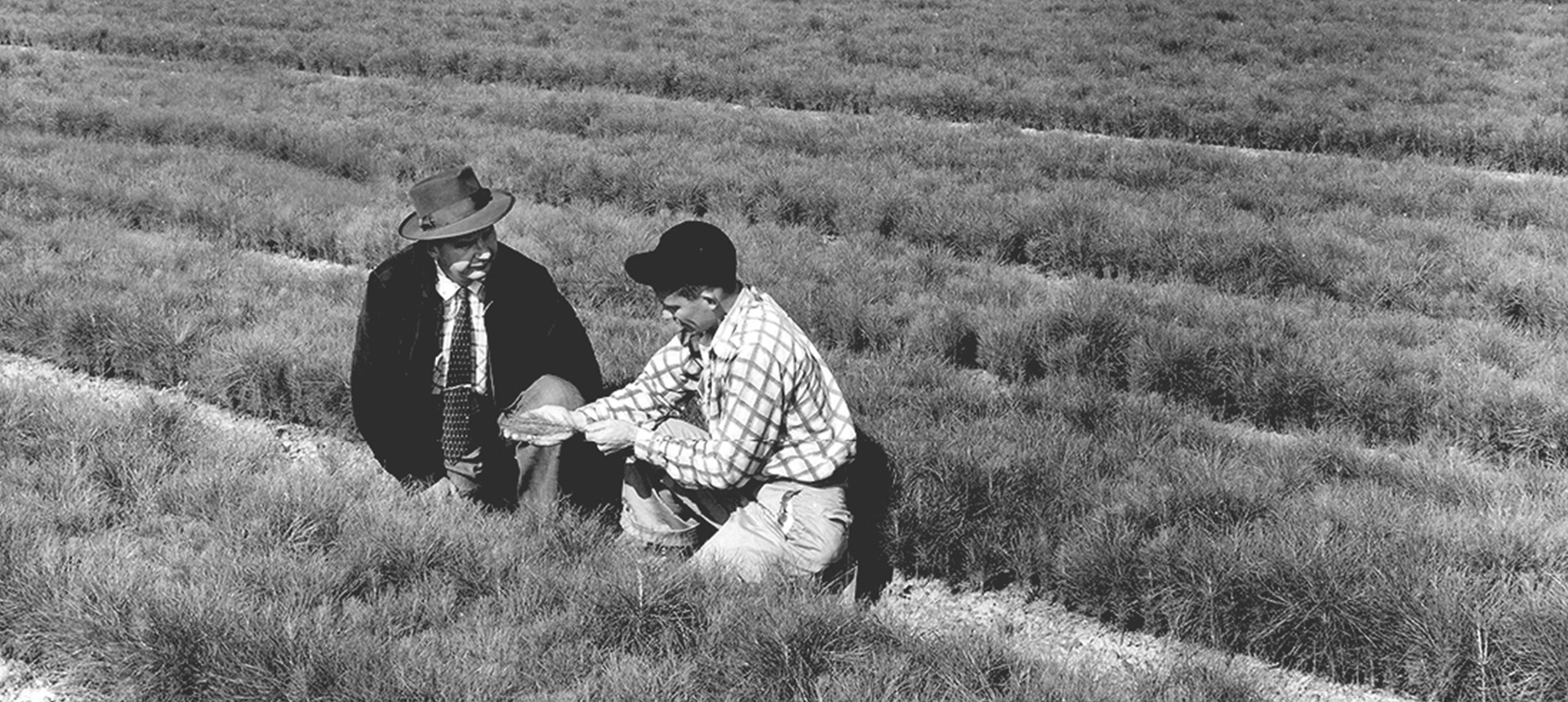
1957
Rayonier establishes its East Coast Genetic Resource Center, focused on tree improvement research and tree breeding techniques. This program continues to be a key component of Rayonier’s forest management program today, with a focus on breeding the most disease-resistant, productive trees.

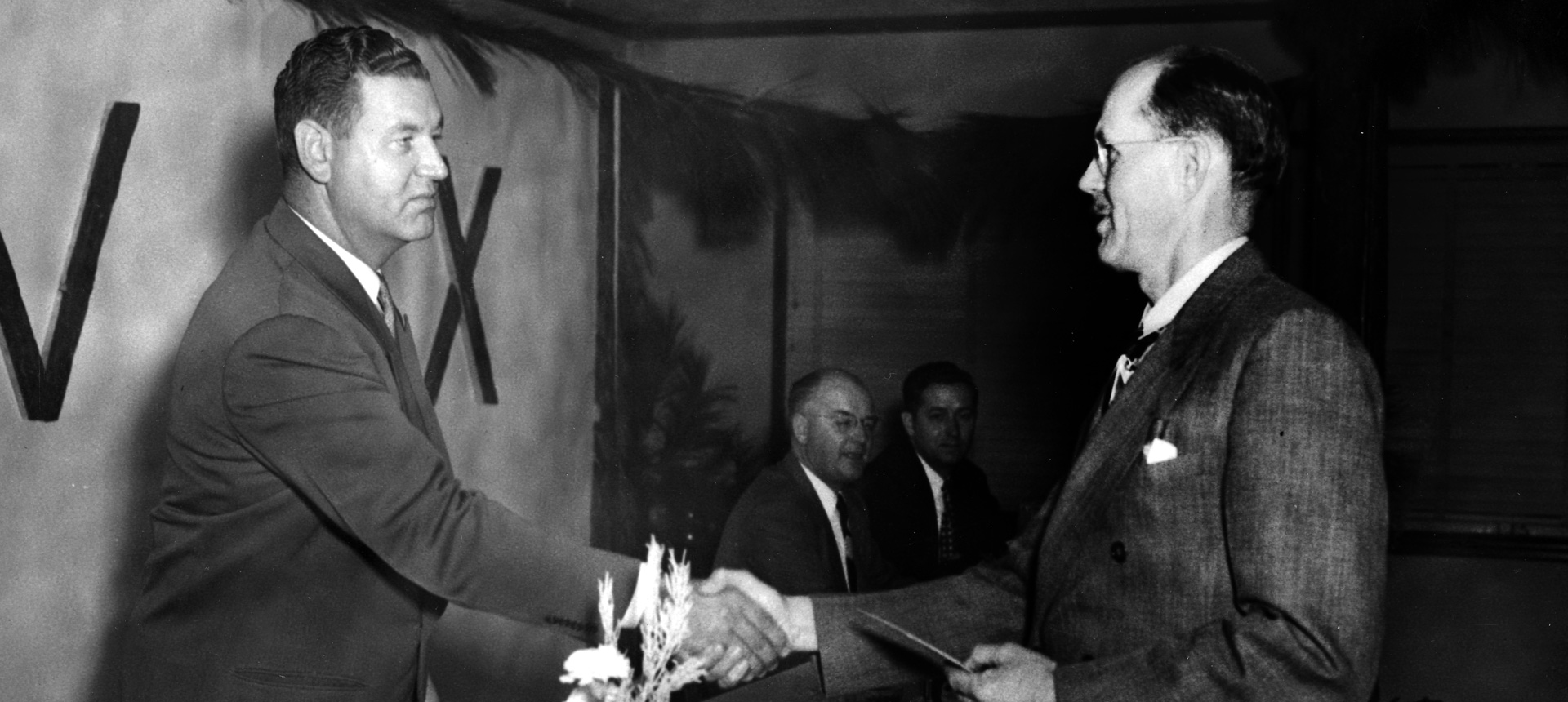
1958
An engineer, Russell Erickson, is named the new Rayonier president. He focuses on improving efficiency, including how we manage our vast timber holdings. He rebuilds the railroads we inherited in the Northwest, purchases equipment to improve efficiency in logging operations and takes a detailed forest inventory. Access roads are created, tree farms are planted, and plans are developed for reforestation as well as fire protection in our forests.

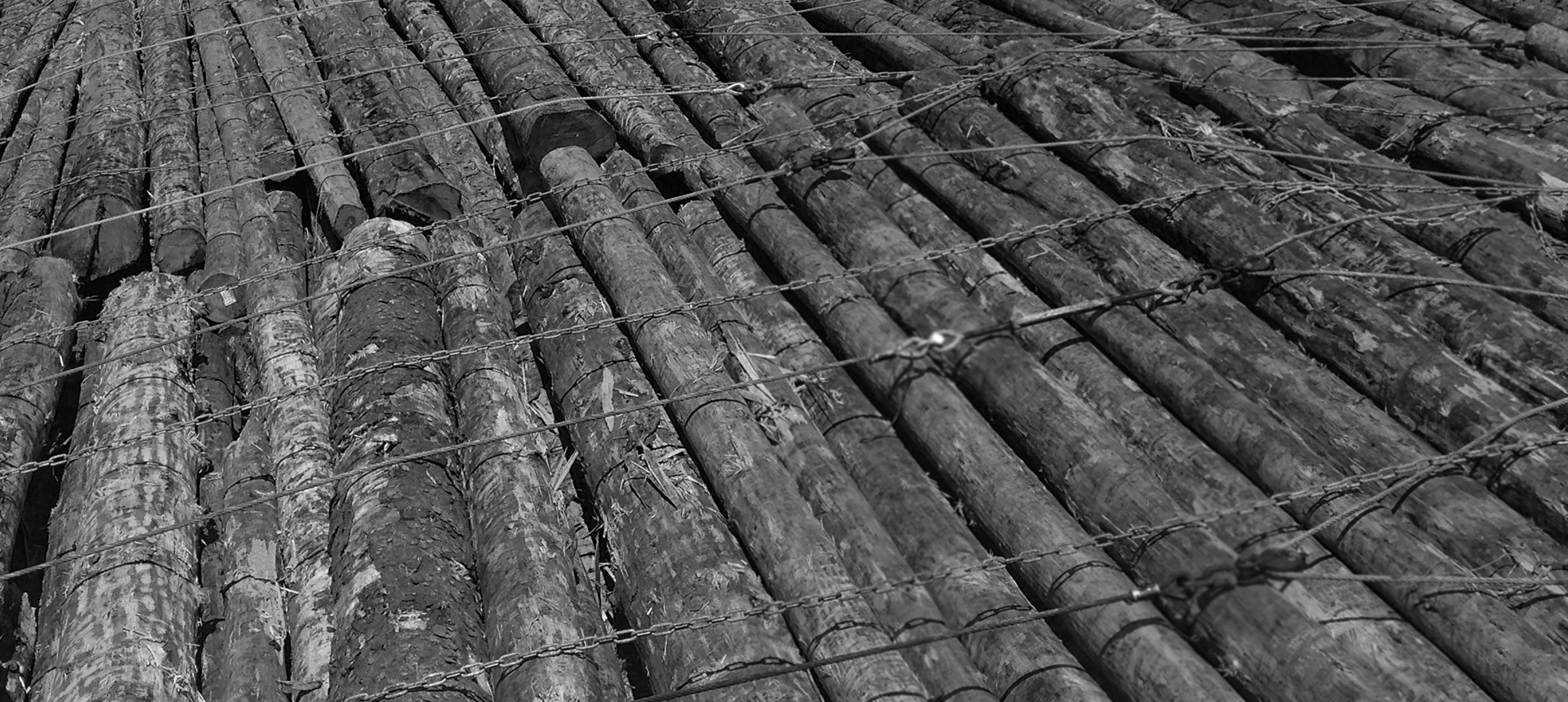
1962
Forests are leveled by a devastating Columbus Day windstorm in the Pacific Northwest, which will be remembered as one of the worst storms of the century. Efforts to salvage fallen timber lead to the development of major new markets for logs in the Far East, initially in Japan, but eventually also in Korea and China.
Log export becomes a large and profitable business for Rayonier and for other Pacific Northwest forest products companies over the decades that follow.

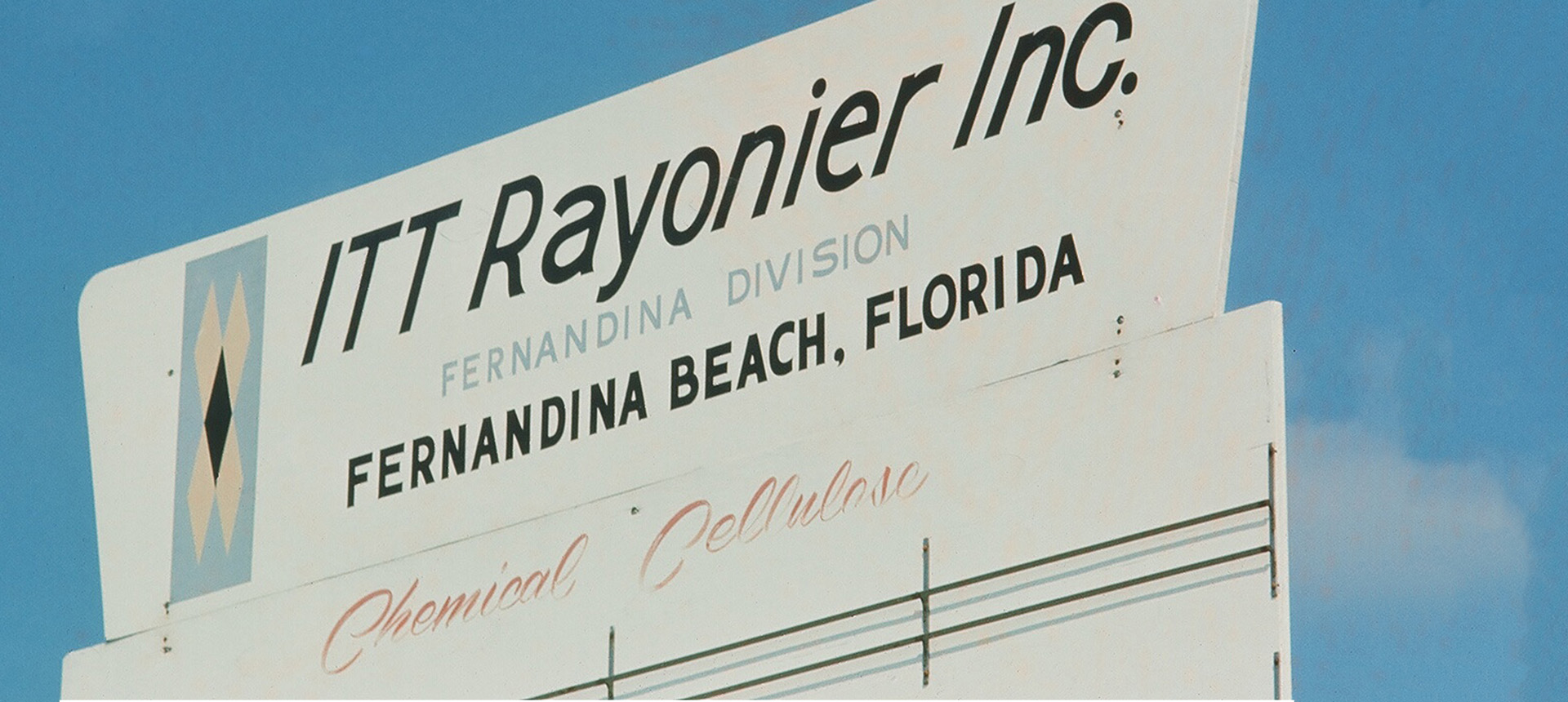
1968
Rayonier is purchased for $293 million, becoming ITT Rayonier, a wholly-owned subsidiary of ITT Corporation, a major international conglomerate.
In 1994, Rayonier will spin-off from ITT and resume as an independent corporation.

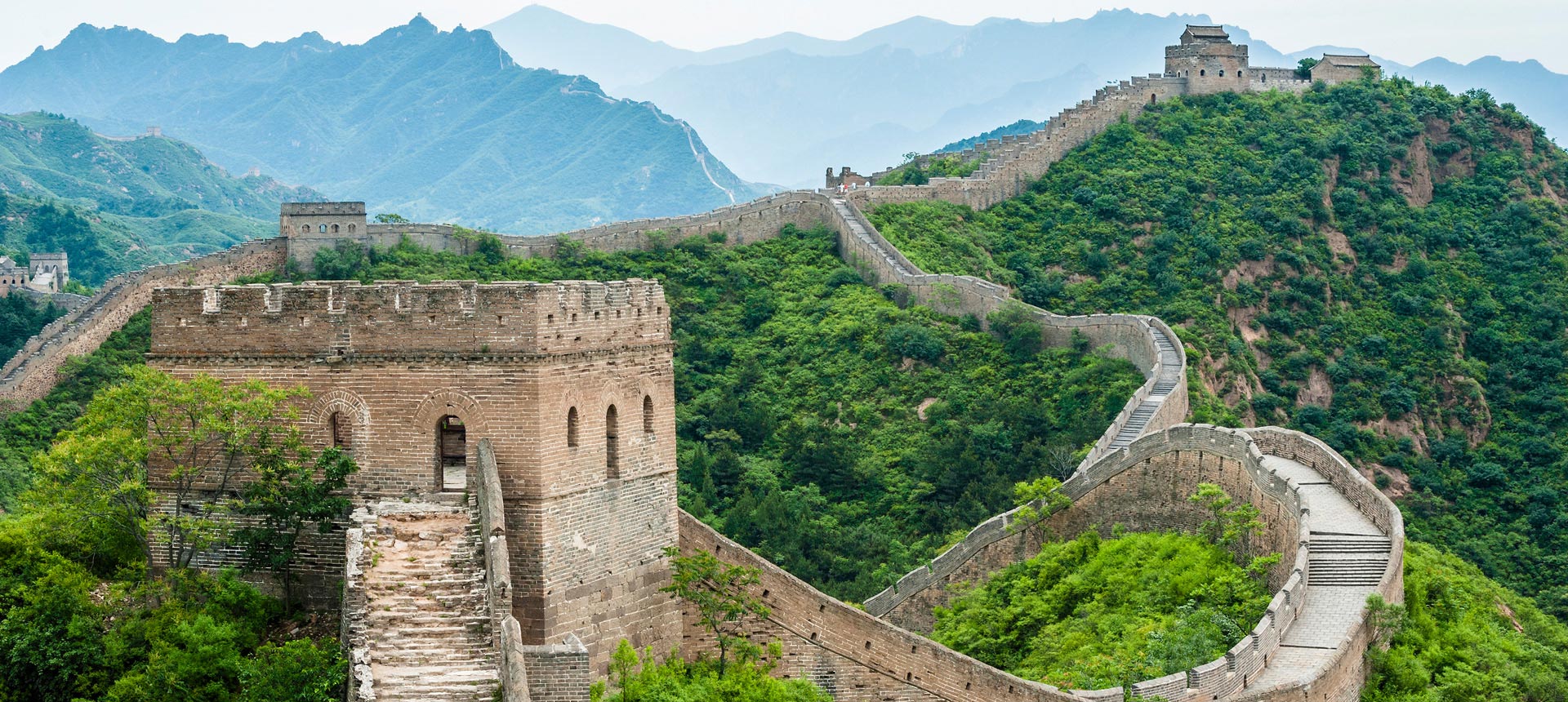
1980
A year after the restoration of diplomatic relations between the United States and China, Rayonier opens a new office in Tokyo, Japan, and successfully establishes a customer base in China for its U.S. pulp. In 1985, Rayonier will open an office in Beijing, China.


1981
With the opening of Naval Submarine Base Kings Bay adjacent to Rayonier forest land in the late 1970s, Rayonier recognizes it has to sell properties that will be needed for homes, schools, utilities and other development as families move to the area. The company establishes Rayland, a subsidiary that will work with local leadership and sell land with a “higher and better use.” This real estate company will later be renamed Raydient Places + Properties.

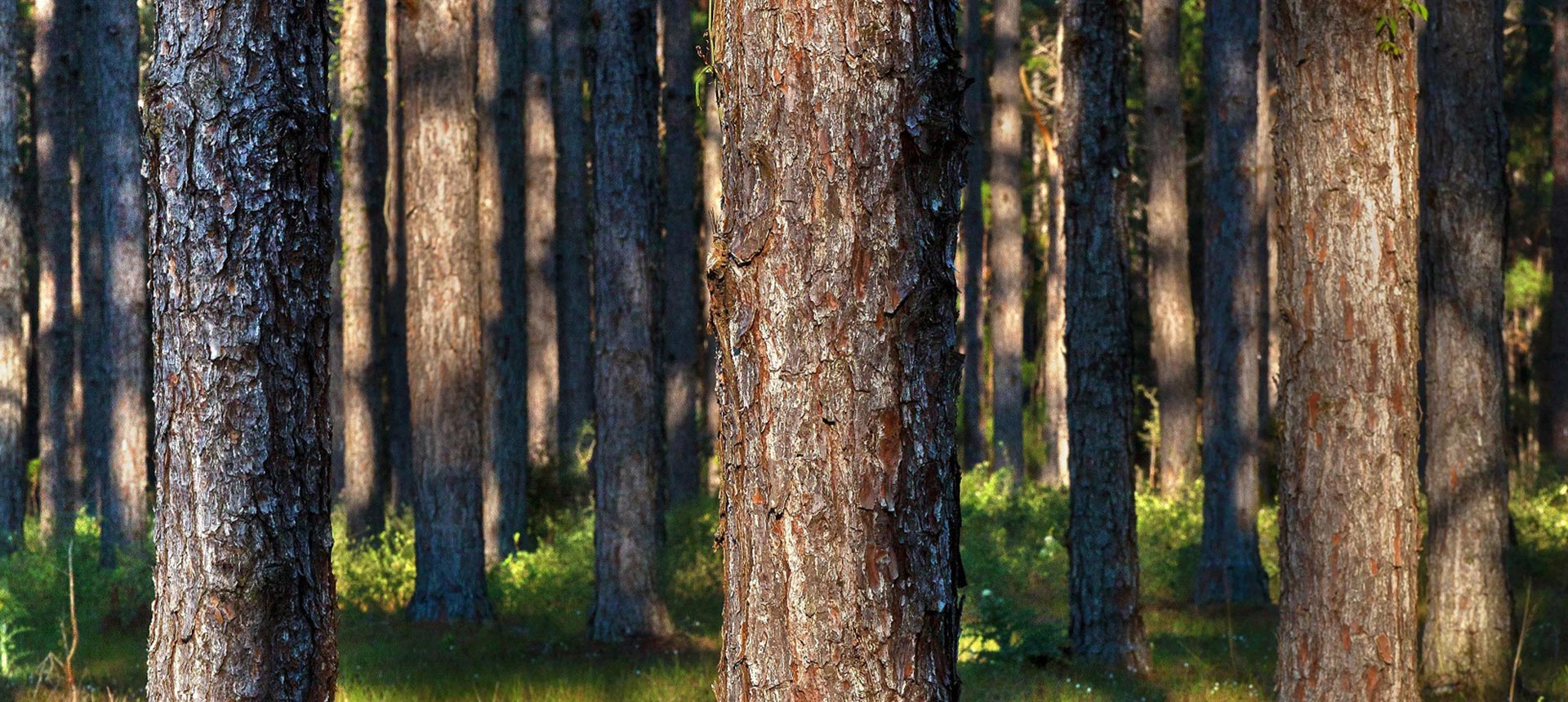
1985
Rayonier Timberlands Limited Partnership, L.P. (RTLP) is formed, and rights to 25 percent of the cash flow from Rayonier’s timberlands are sold to the public via an IPO of partnership units. Public participation in the partnership will end in 1998, but one result of the partnership is that Rayonier breaks the supply link between its timberlands and manufacturing facilities, auctioning timber to the highest bidder. This helps establish the unique non-integrated operating model that Rayonier continues to use today.

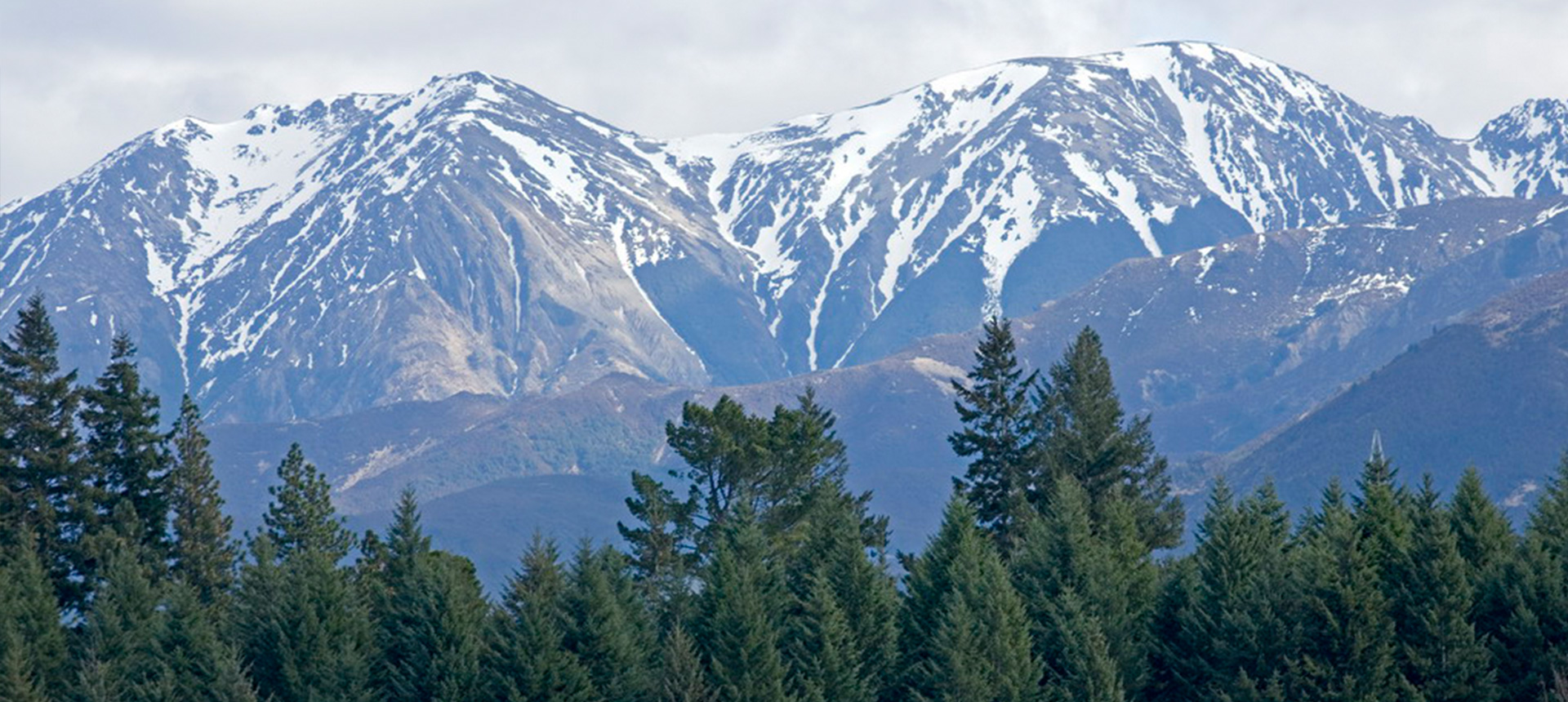
1988
A log trading office is opened in Auckland, New Zealand, paving the way for Rayonier to expand its interest in the country that is rich in timber. New Zealand is within close proximity to Asian markets with a high demand for timber.

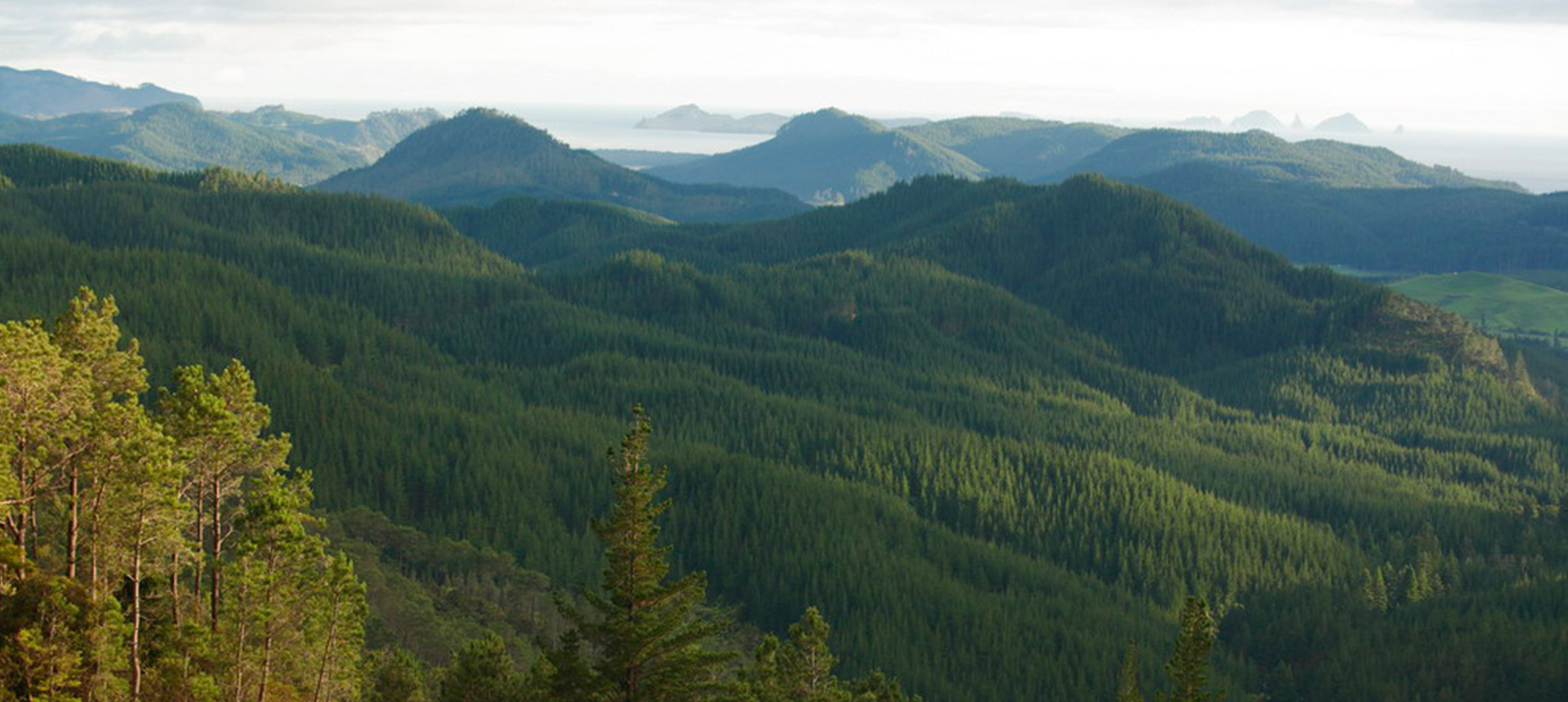
1992
Rayonier purchases over 250,000 acres of highly productive radiata pine plantations in New Zealand, strengthening our ability to serve customers in New Zealand and in Asian markets.

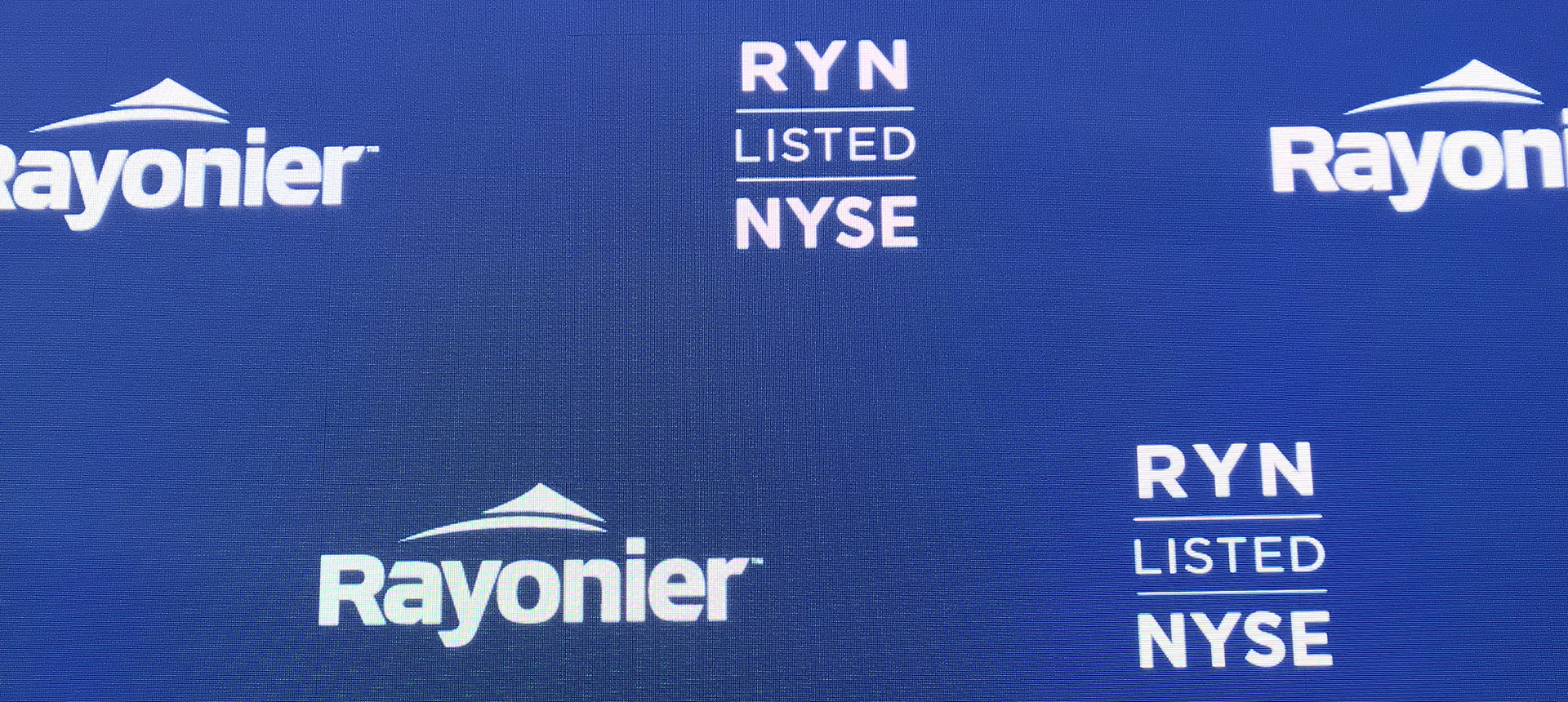
1994
After the ITT spin-off, Rayonier stock trading begins on the New York Stock Exchange under the symbol RYN in 1994.

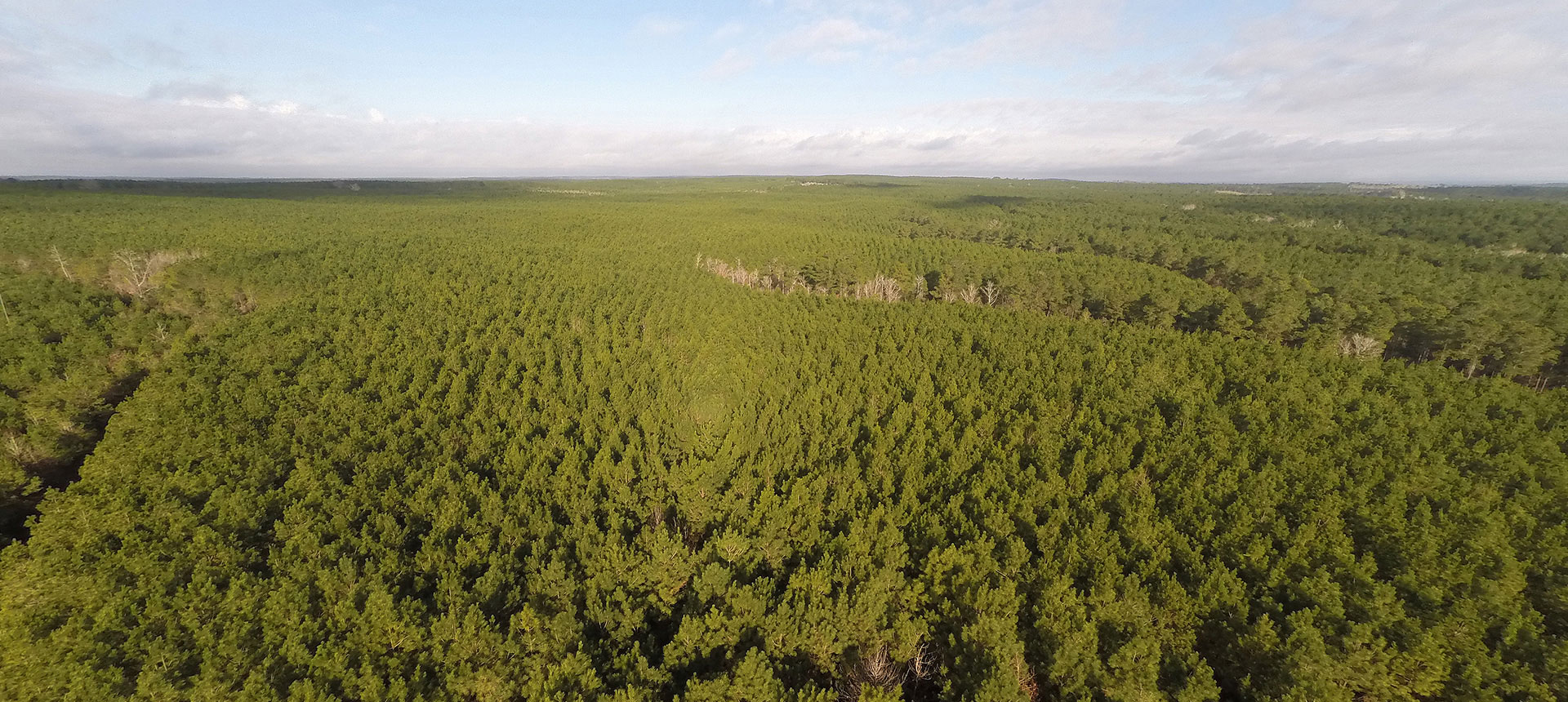
1999
Rayonier becomes the 7th largest private timberland owner in the U.S. by purchasing 968,000 acres of timberland in Florida, Georgia and Alabama from Smurfit-Stone Container, bringing Rayonier’s total ownership to 2.4 million acres.

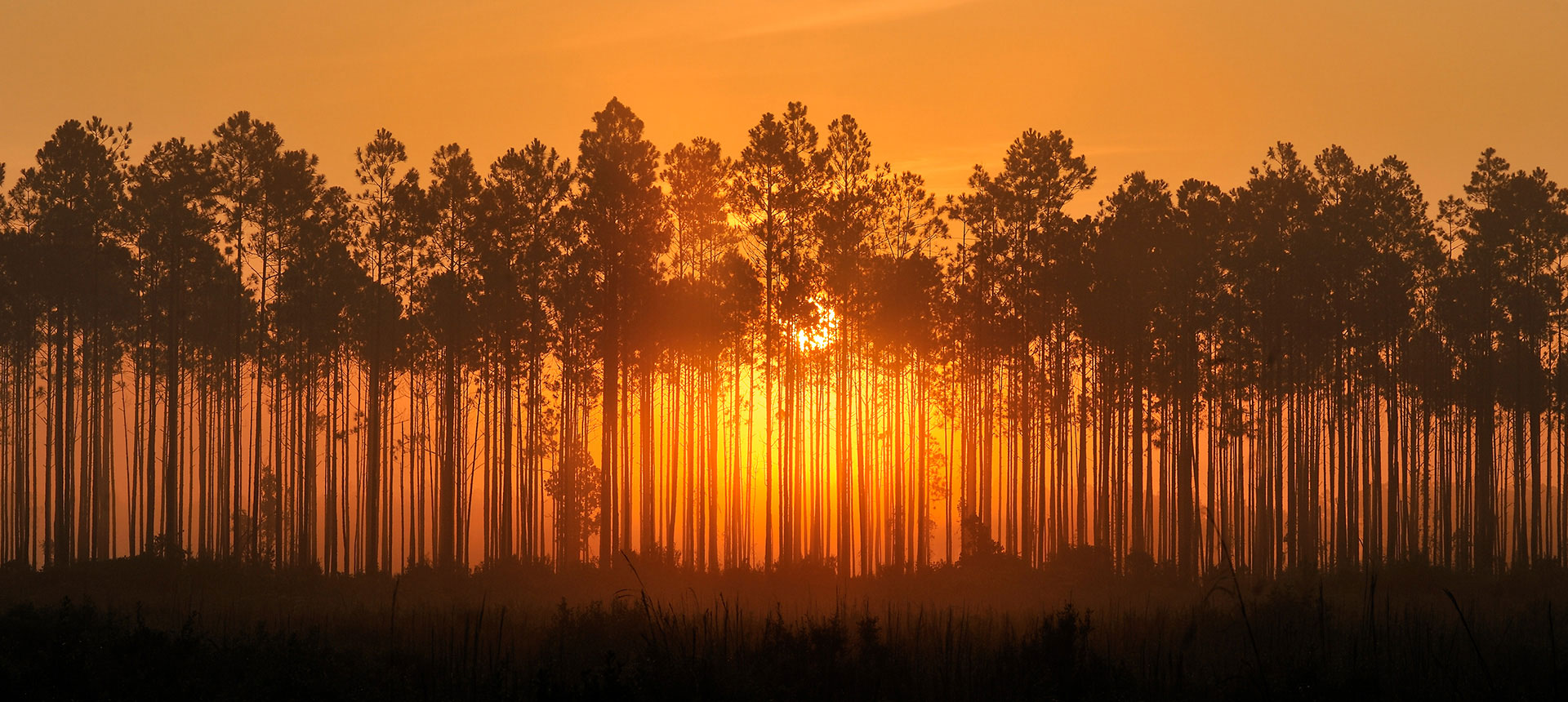
2000
Rayonier partners with several conservation agencies to complete one of the largest protected areas east of the Mississippi, the Pinhook Swamp. The sale of our 60,000-acre tract is the missing puzzle piece in a corridor that links Florida’s Osceola National Forest to the south with the Okefenokee National Wildlife Refuge to the north. The swamp helps protect the region’s water resources while hosting an ecosystem that is important to black bears and many wetland-dependent species.

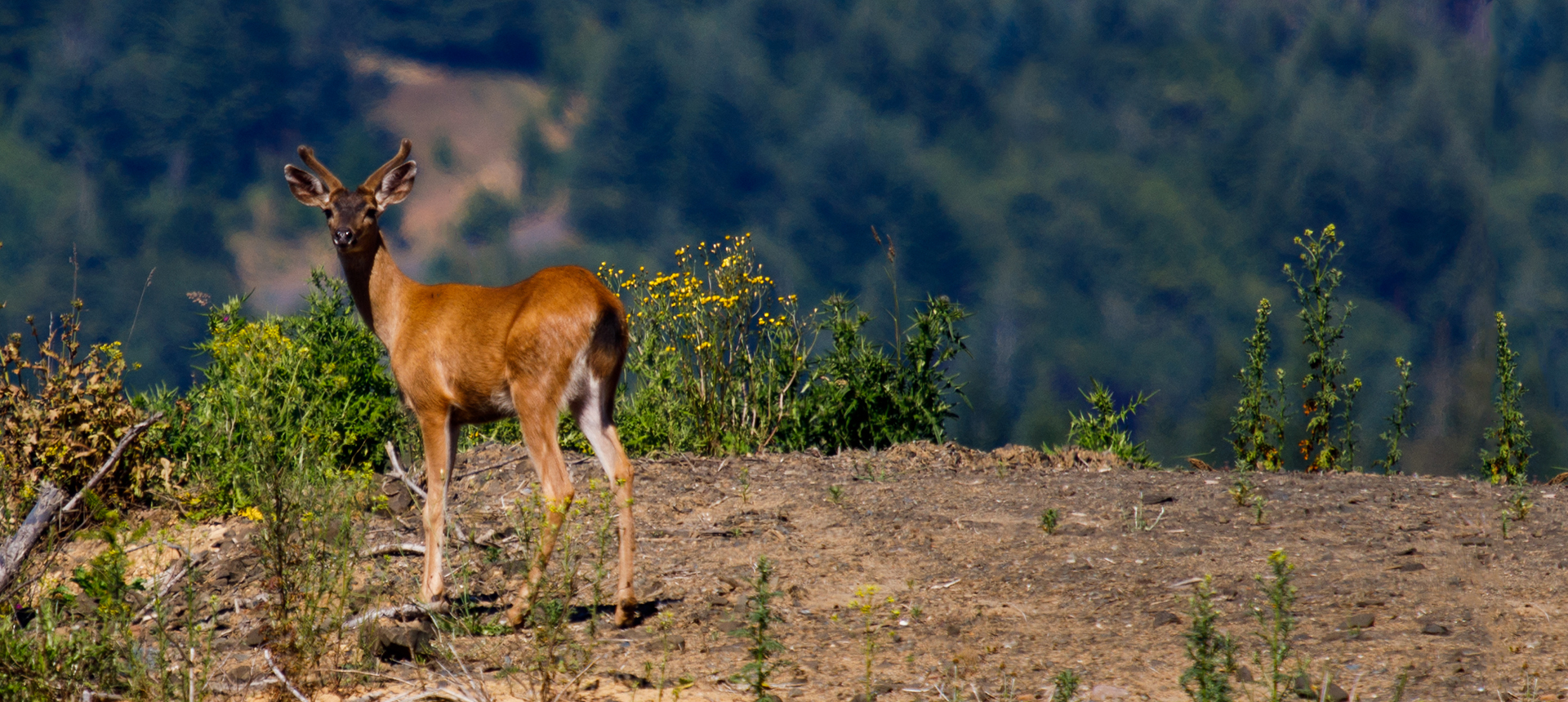
2001
In 2001, Rayonier's U.S. forests achieve Sustainable Forestry Initiative® certification.
Designed to protect the world's forests and the ecosystems that rely on them, these sustainability standards include measures to protect wildlife as well as water and soil quality. We work with third party auditors, who regularly check our land to ensure compliance. Only a small percentage of the world's forests are certified.
Rayonier's New Zealand forests also achieve Forest Stewardship Council® certification a few years prior, in 1998, making Rayonier Matariki one of the first forestry companies to do so in New Zealand.

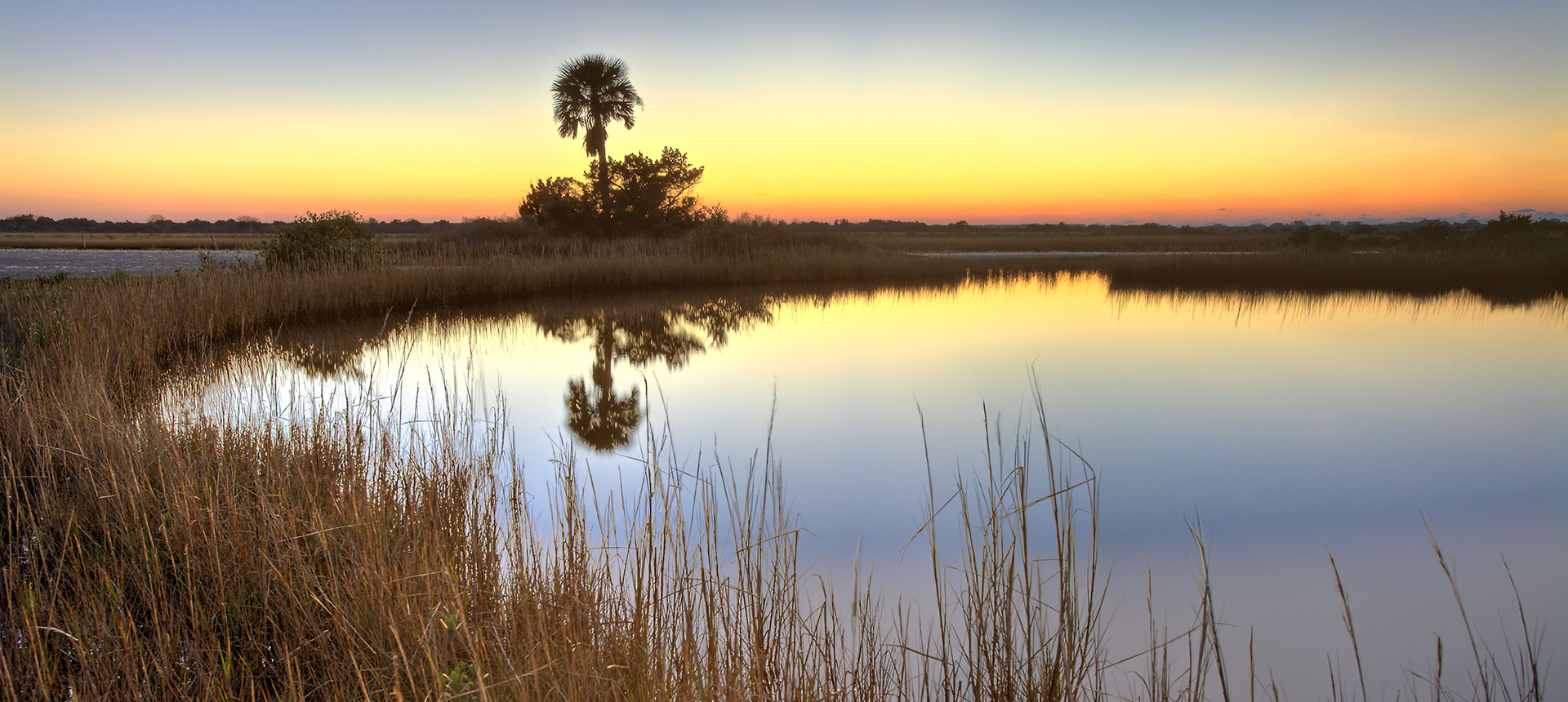
2003
The sale of Rayonier’s Matanzas Marsh triples the size of Florida’s Faver-Dykes State Park and leads to creation of the Matanzas State Forest. This property, purchased by the Florida Forever program, was key to complete an important wildlife conservation corridor, the last undisturbed salt marsh within the Guana Tolomato Matanzas National Estuarine Research Reserve.
Designated an important birding area by The Audubon Society, it offers recreational and research opportunities in a rare and beautifully-preserved setting. No other landowner has placed more Florida land into conservation than Rayonier.

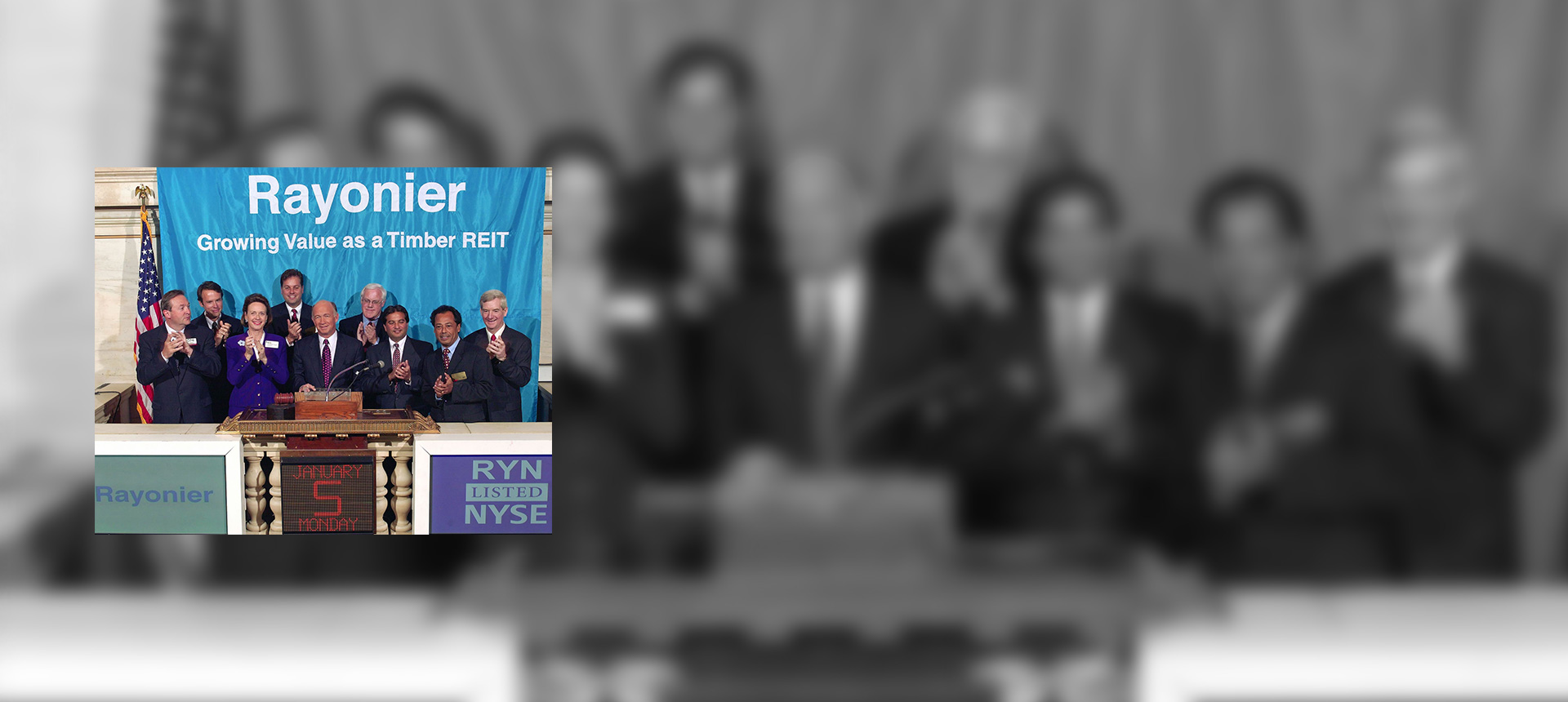
2004
On January 1, 2004, Rayonier reorganizes as a Real Estate Investment Trust, or REIT, focusing on three core businesses: forest resources, real estate and performance fibers. In 2007, Rayonier will become the first REIT to issue convertible debt from its subsidiaries.

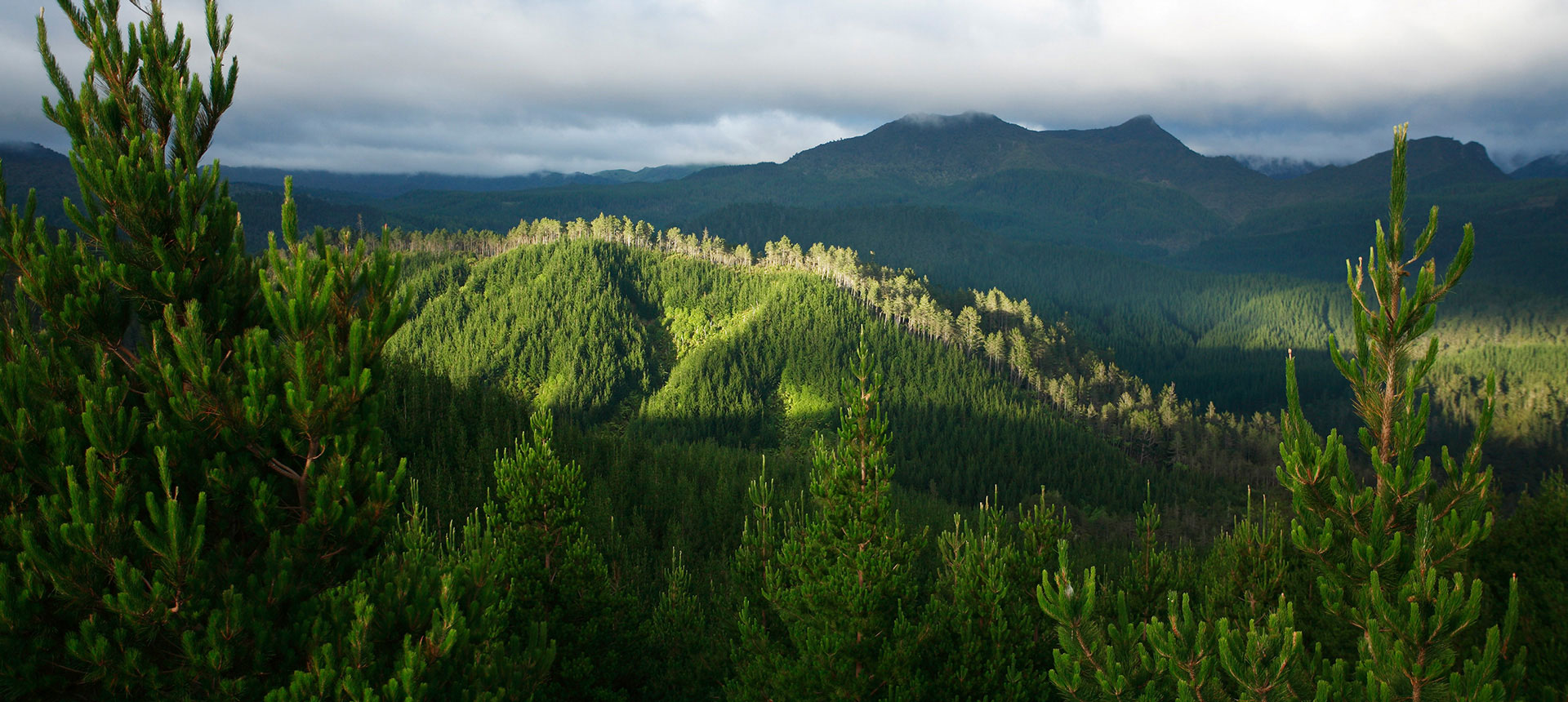
2005
Rayonier purchases 326,000 acres in New Zealand, forming a joint venture named Rayonier | Matariki Forests that more than doubles the size of its business in New Zealand.

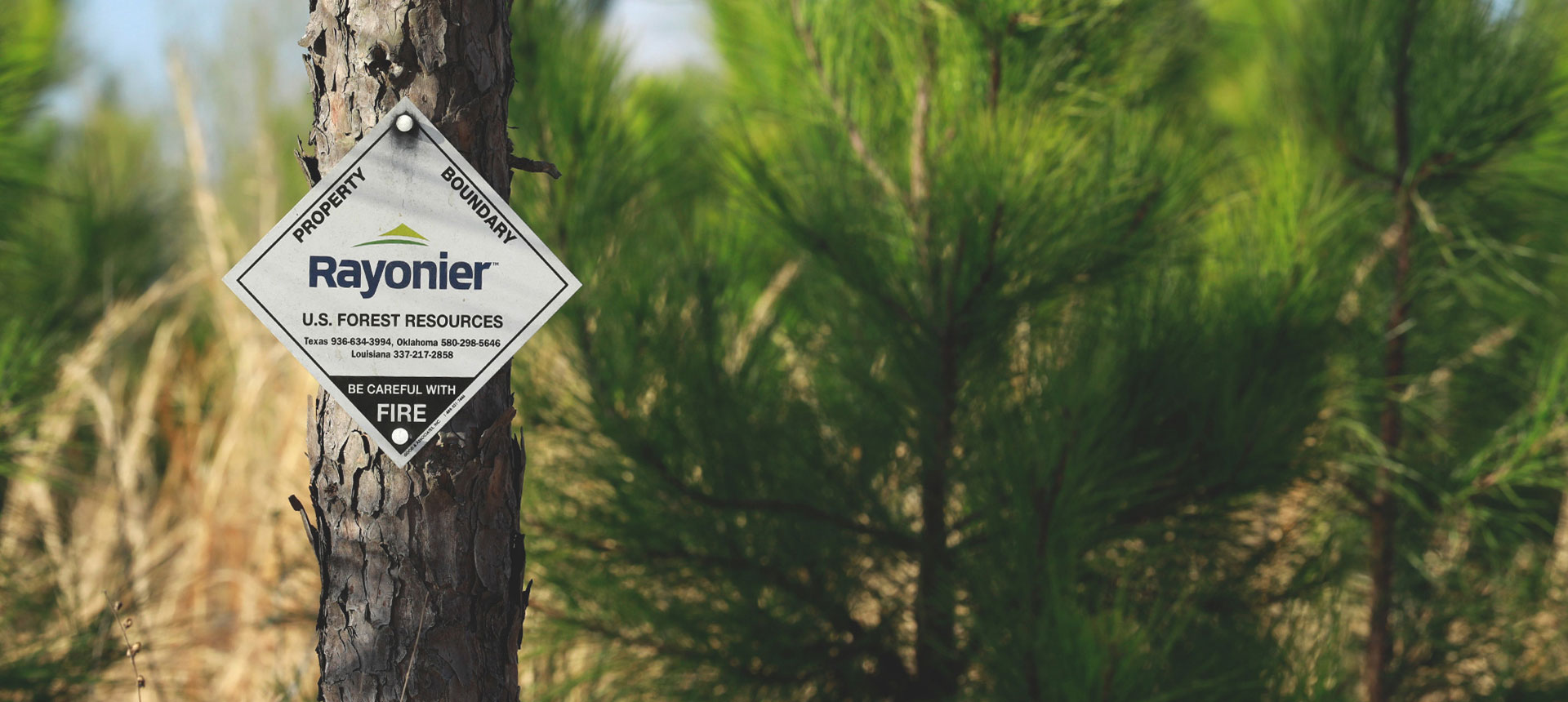
2006
Rayonier’s timberland purchases continue, with a 228,000-acre acquisition in the Southeast in 2006; 110,000 acres in New York and Washington states in 2008; and 250,000 acres in Mississippi, Louisiana, Alabama and Tennessee in 2011.

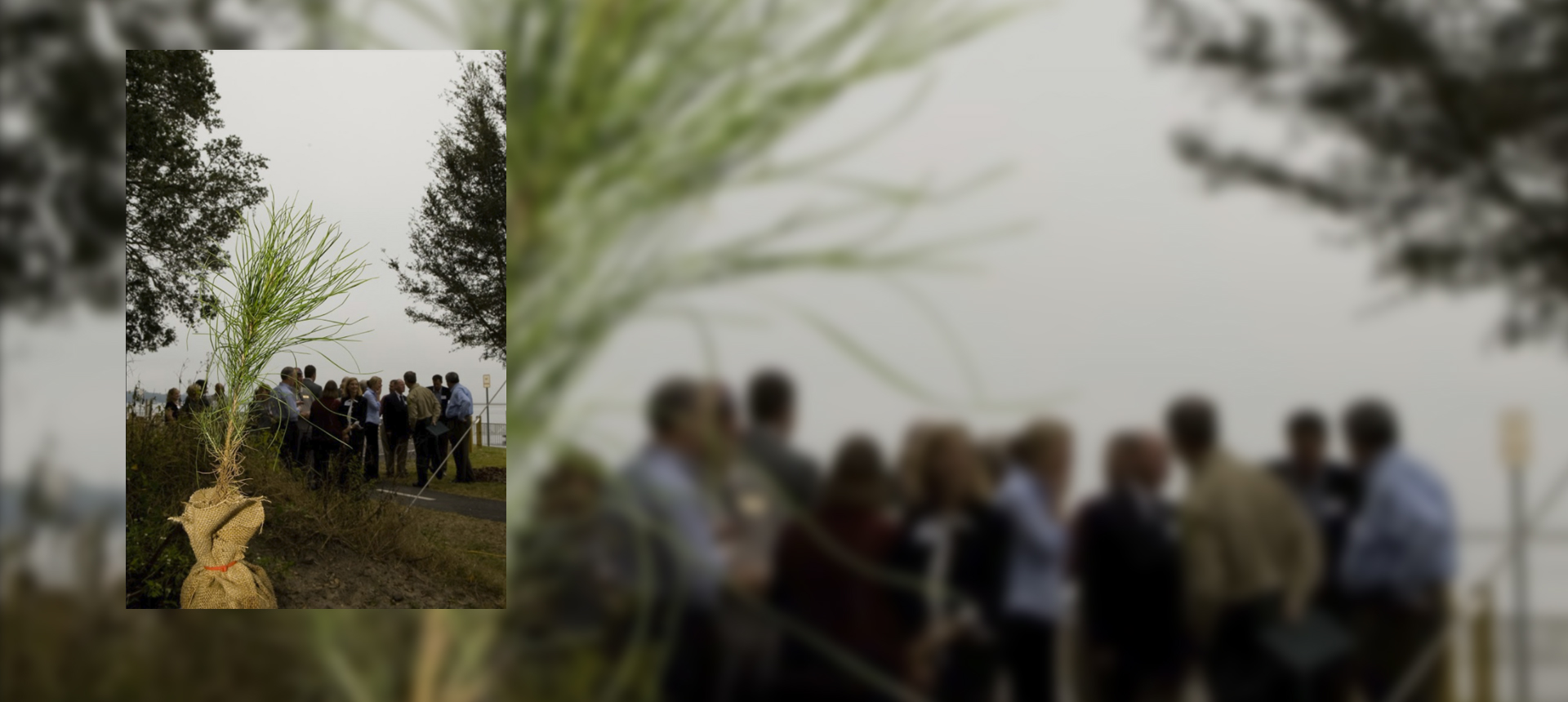
2009
Rayonier plants its billionth tree on November 19, 2009, in Nassau County, Florida, not far from where it planted its first stand of trees in the 1930s.

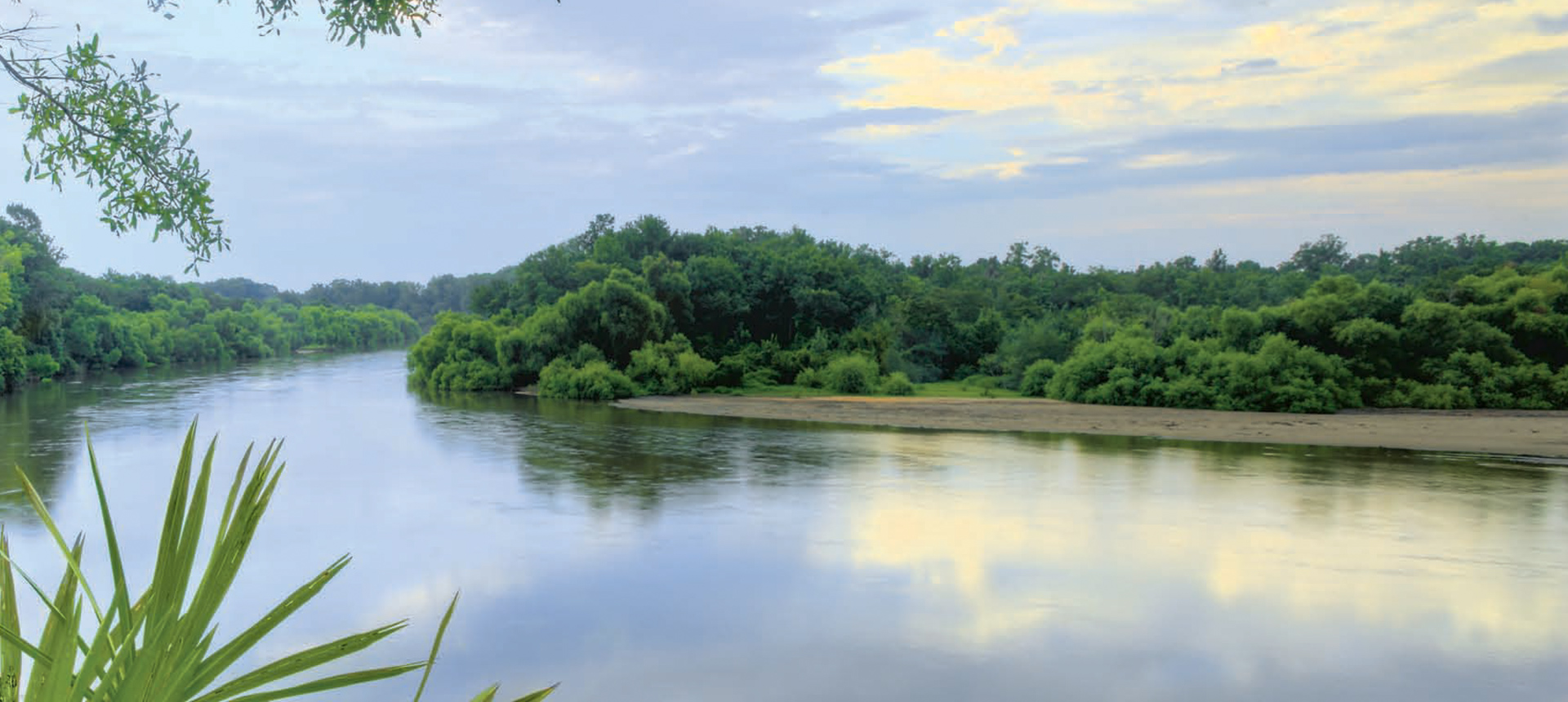
2010
Rayonier sells 14,000 acres to The Nature Conservancy to conserve the Murff Tract in Southeast Georgia’s Altamaha River watershed, protecting at least 17 endangered, threatened or special concern species.

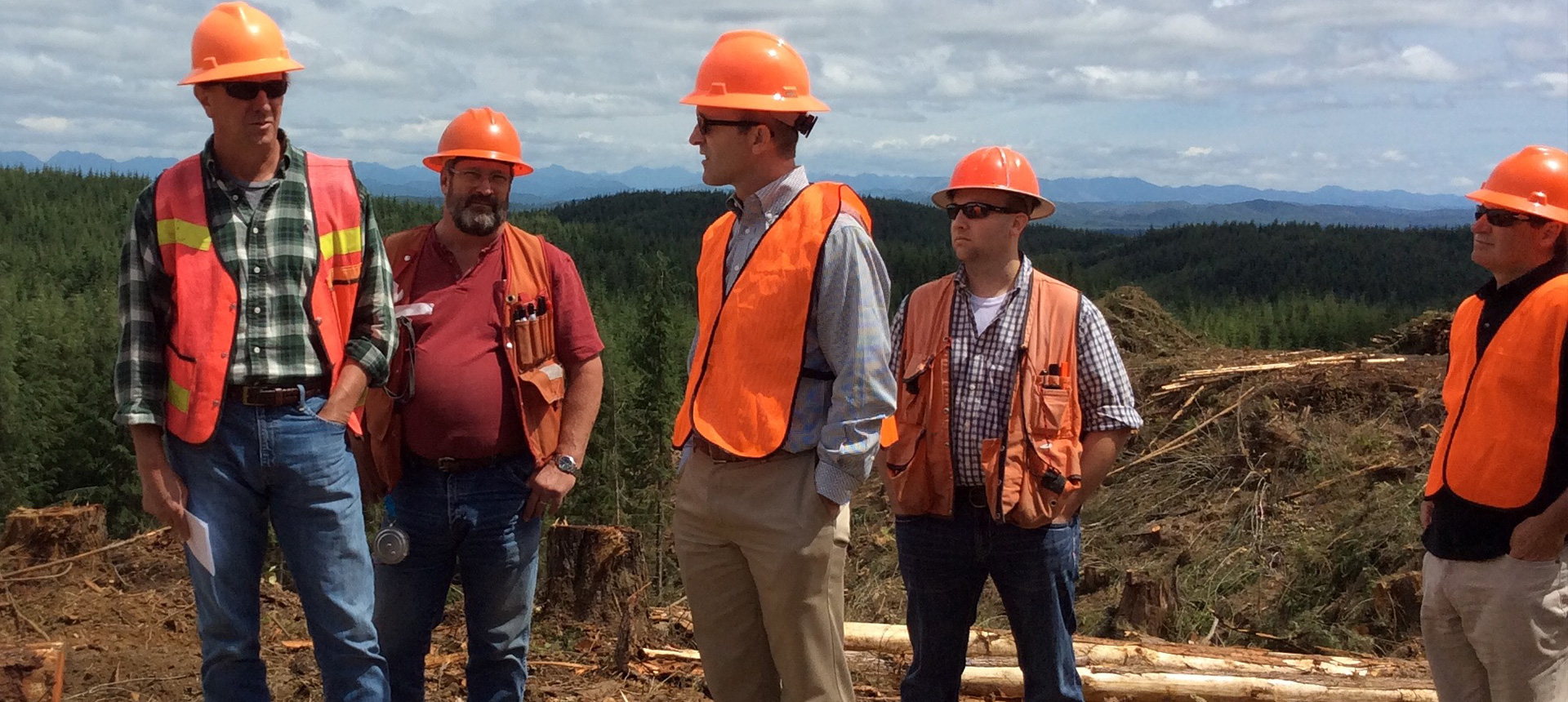
2014
On June 27, 2014, Rayonier’s performance fibers business spins off into an independent, publicly traded company, Rayonier Advanced Materials Inc. (NYSE: RYAM). Rayonier announces David L. Nunes as President and Chief Executive Officer.

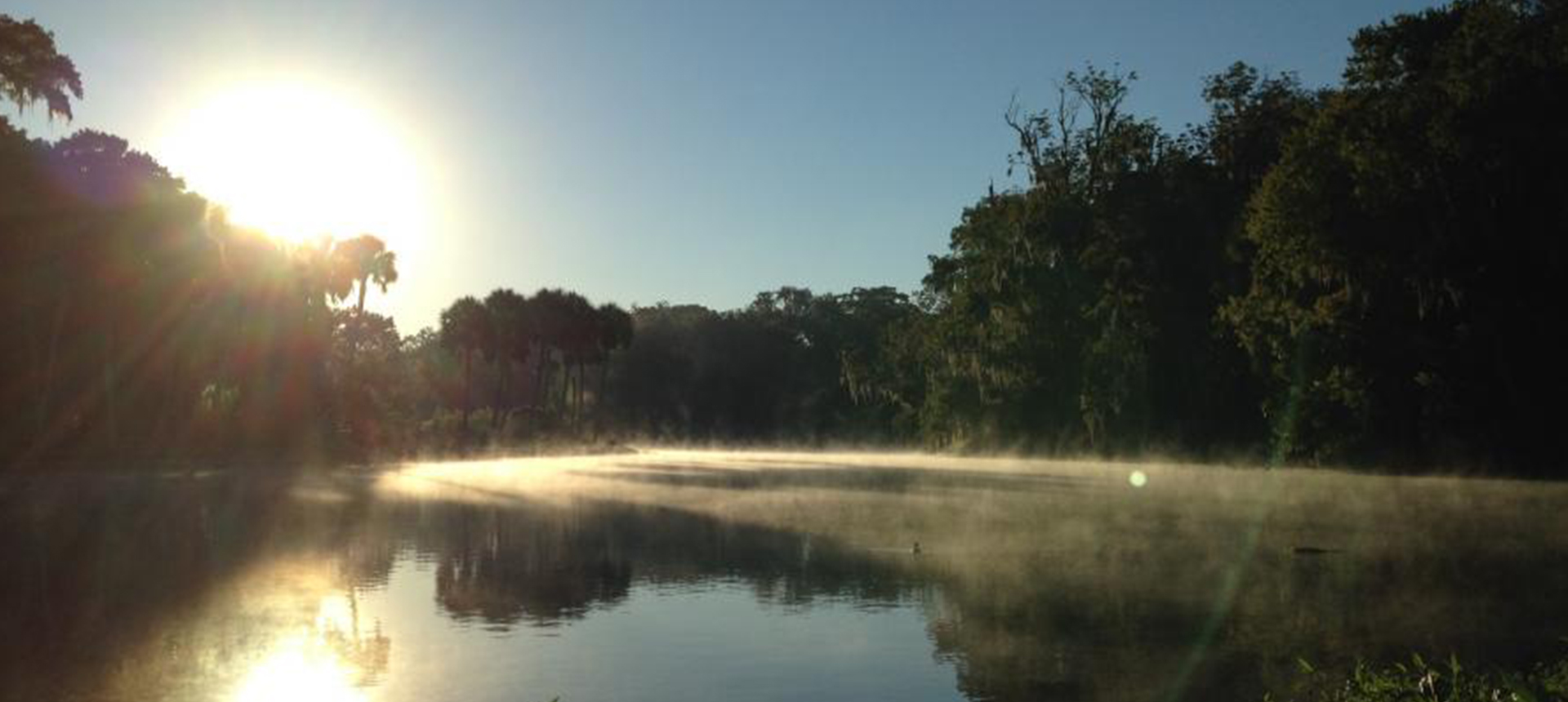
2015
Rayonier sells 4,900 acres destined to become part of the Silver Springs Watershed Forest Legacy Project in Central Florida. It is critical to preserving wildlife habitat and clean water for one of the world’s most iconic freshwater spring systems. The property links Silver Springs State Park to the Cross Florida Greenway and Ocala National Forest.

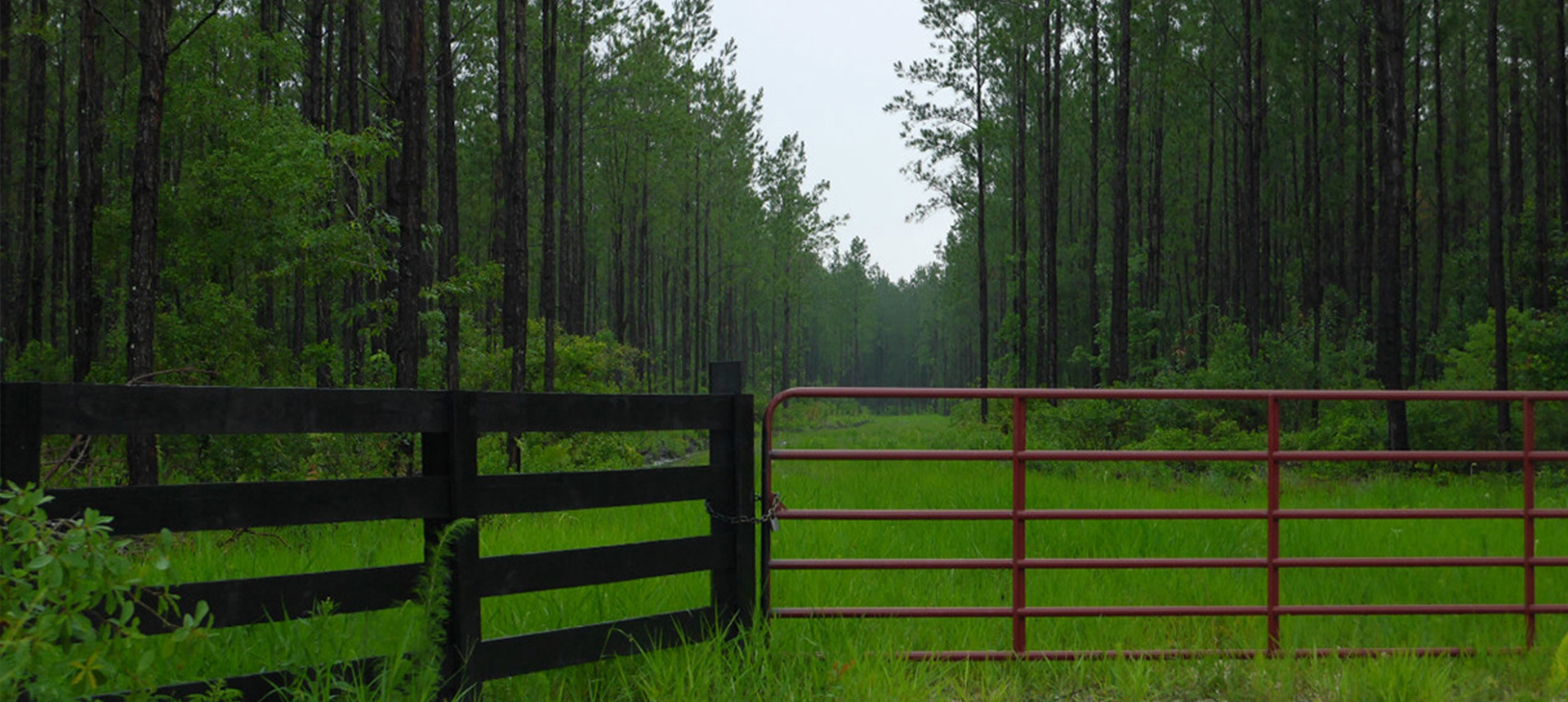
2016
Raydient Places + Properties launches a new product now called “Raydient Places.” These rural properties are enhanced for future homesteads, with fences, completed surveys and titles, and sometimes driveways and culverts.
Rayonier, Raydient and the Nassau County School District host a groundbreaking on March 28, 2016, for Wildlight Elementary School, the first building to begin construction in Wildlight, Raydient’s first master-planned community.
* Raydient is a taxable Rayonier company.

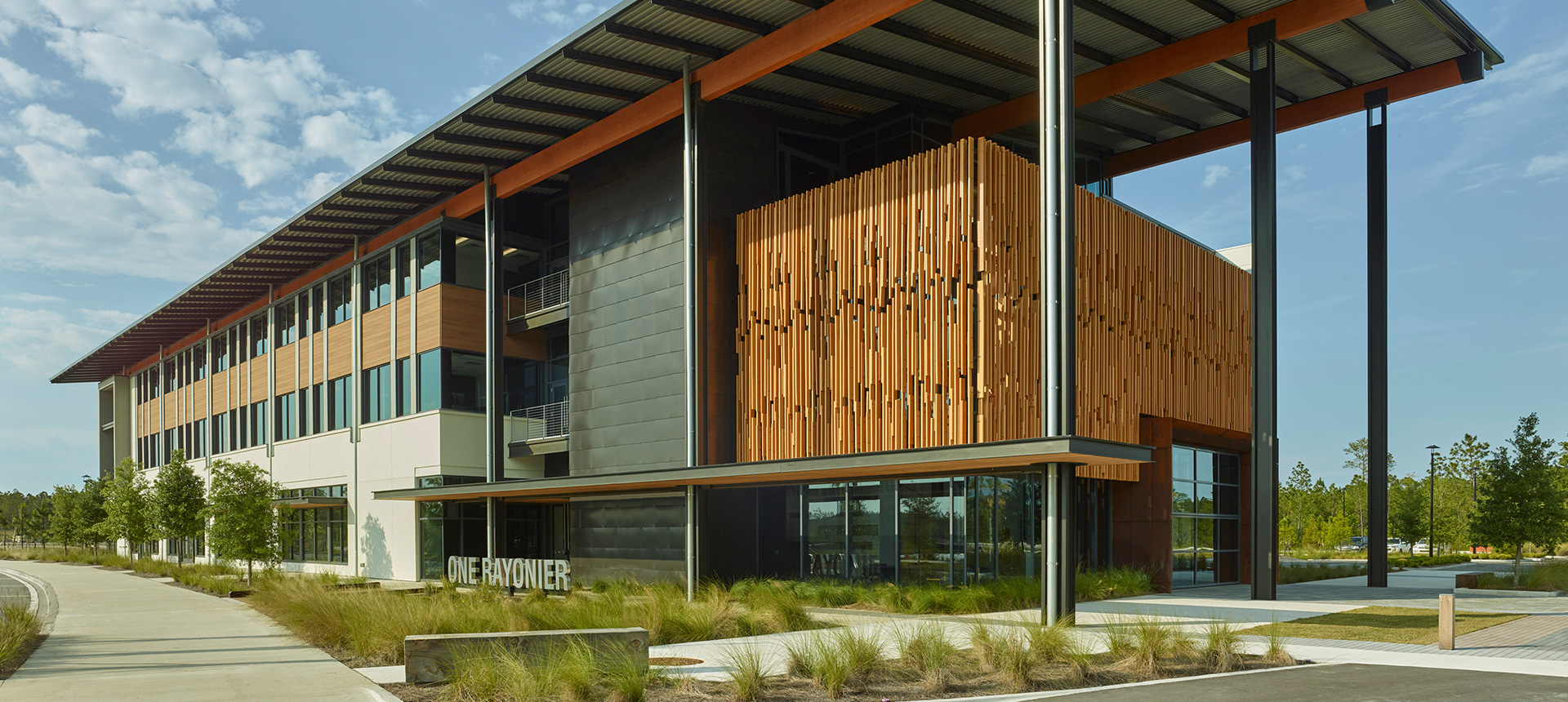
2017
Rayonier moves its headquarters to Wildlight, Florida. The move combines multiple company offices into one and makes Rayonier the first occupant of the new town Raydient is developing, Wildlight.
* Raydient is Rayonier’s taxable real estate subsidiary.

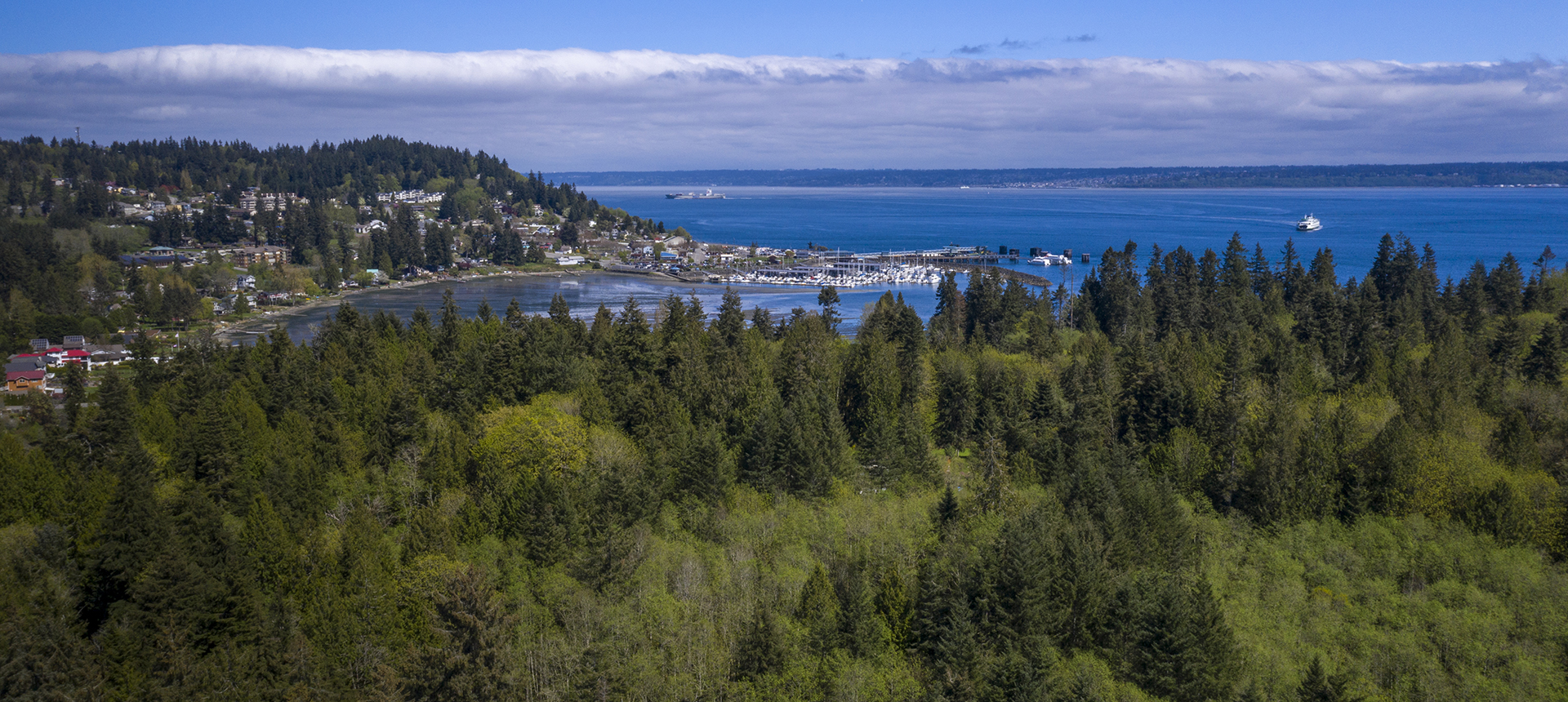
2020
On May 8, 2020, Rayonier acquires Pope Resources, a pure play timber company headquartered in Poulsbo, Washington. The company comes to Rayonier with timberlands, a timber fund business, and a thriving real estate business, Olympic Property Group, which is now a part of Raydient.* Our two companies are closely-aligned in our values, including our long-term approach to decision-making; transparency with employees and investors; and interest in exploring opportunities with non-timber income and real estate.
* Raydient is a trademark of Raydient LLC, a taxable real estate investment trust subsidiary of Rayonier. The Raydient development properties are owned by Raydient LLC and its various subsidiaries.

